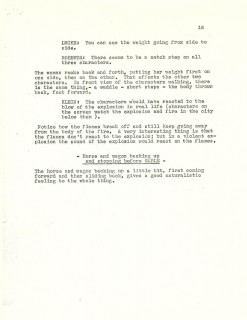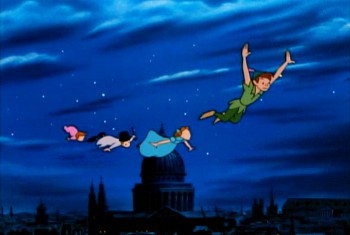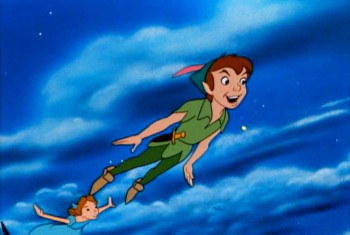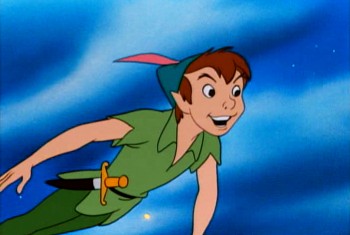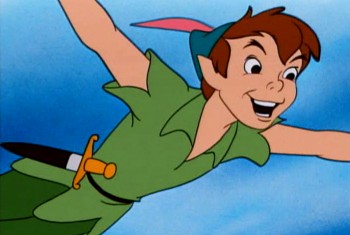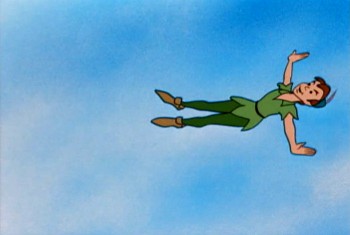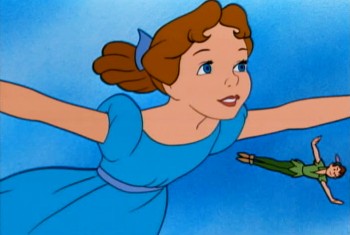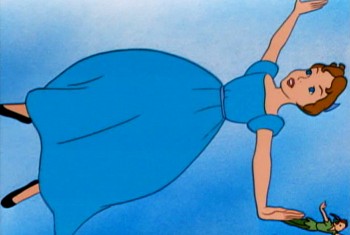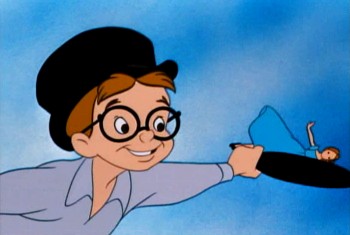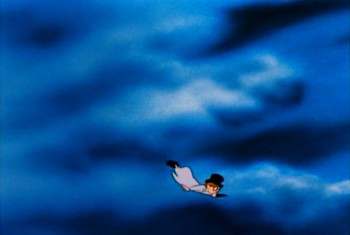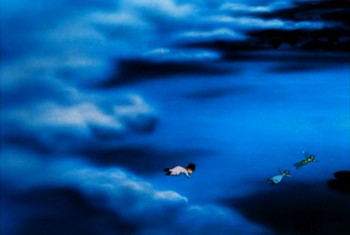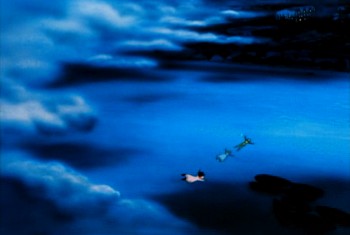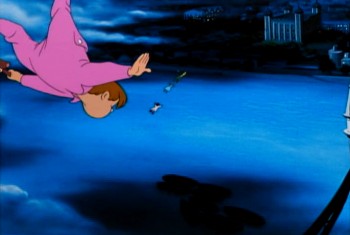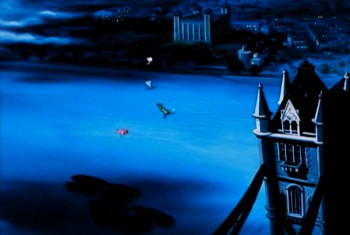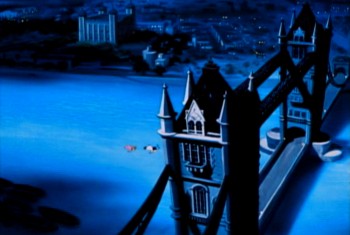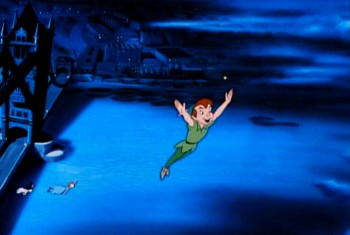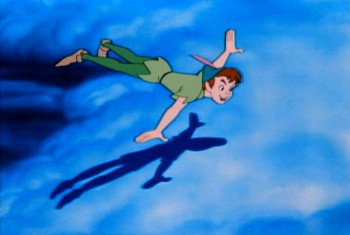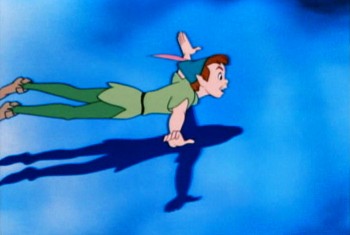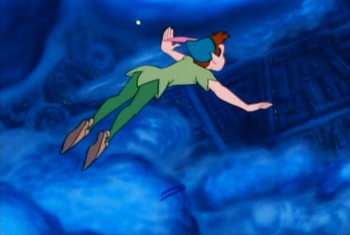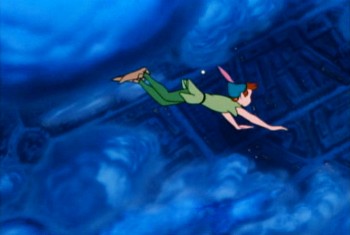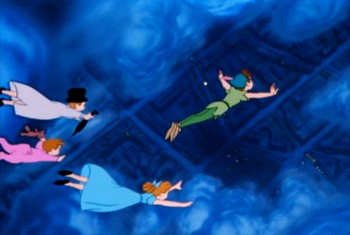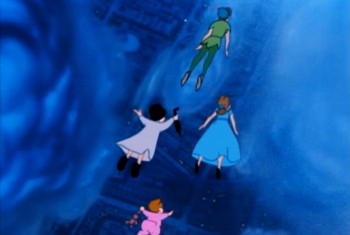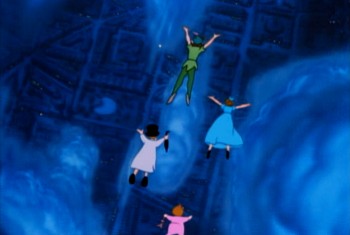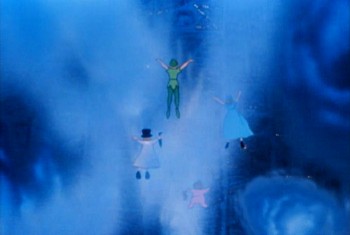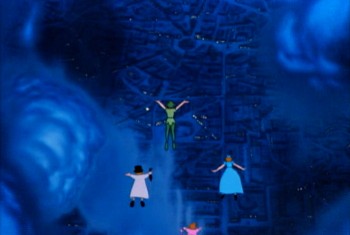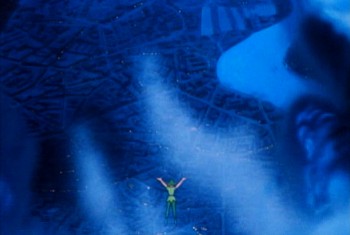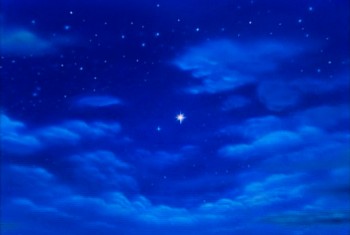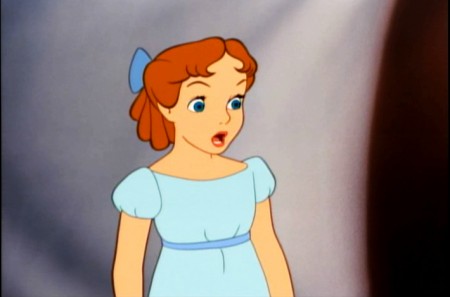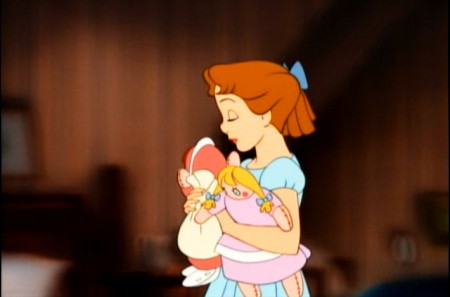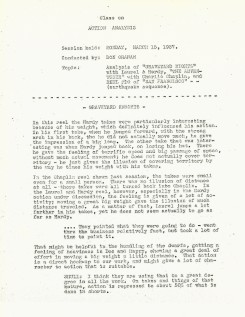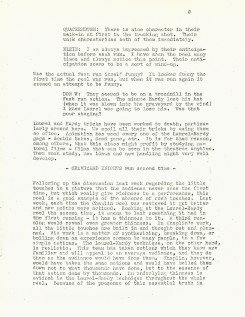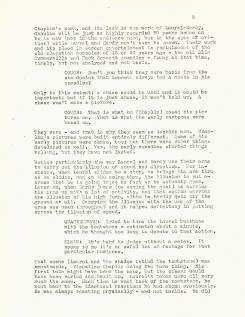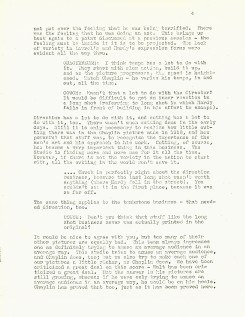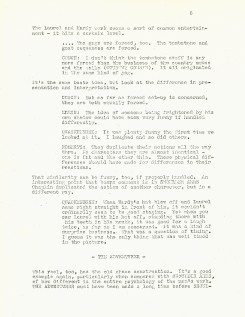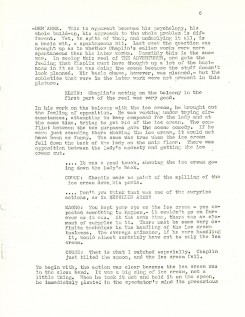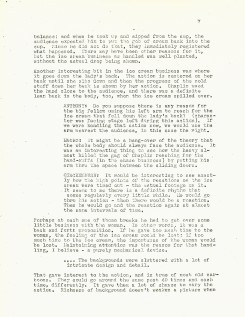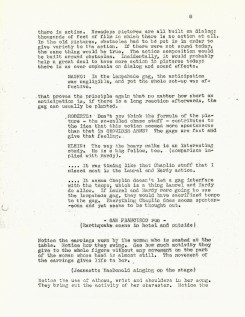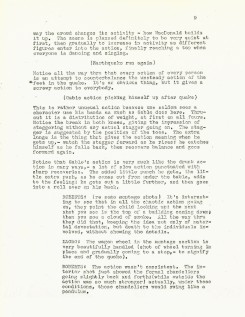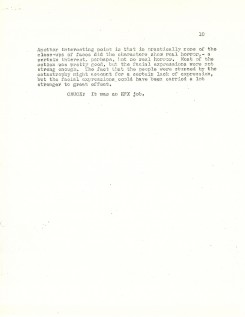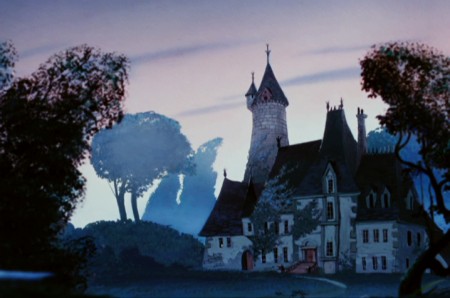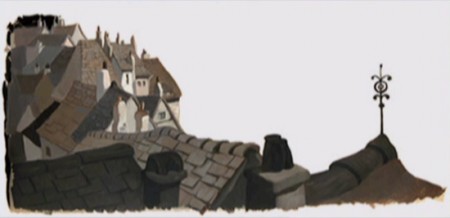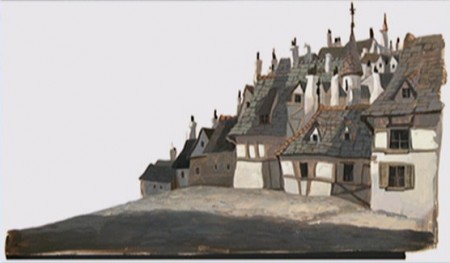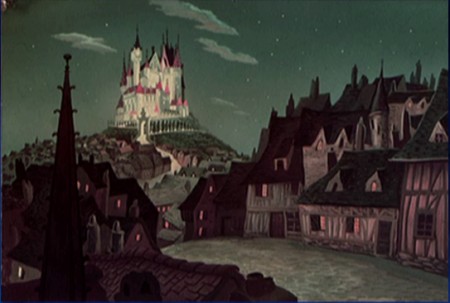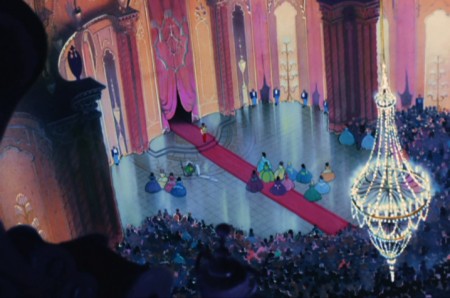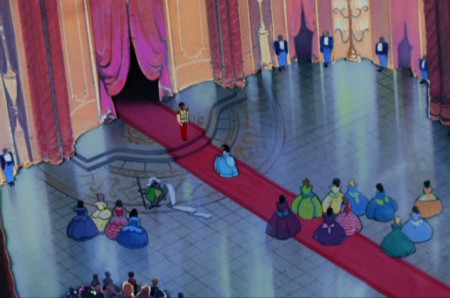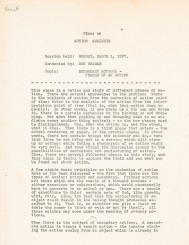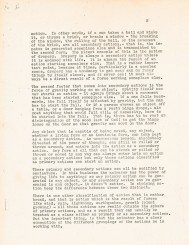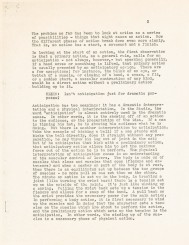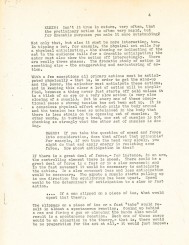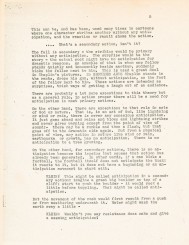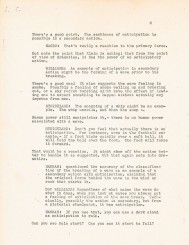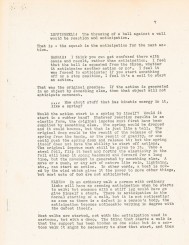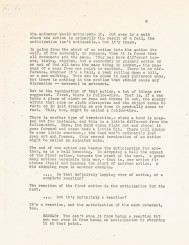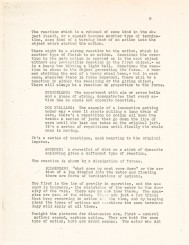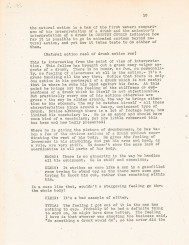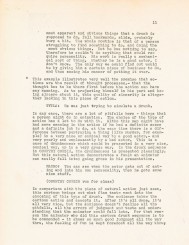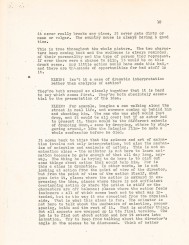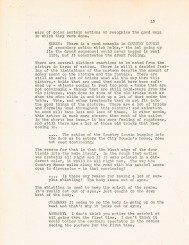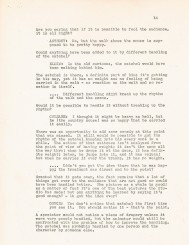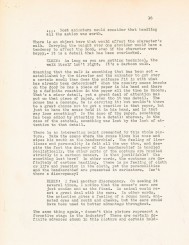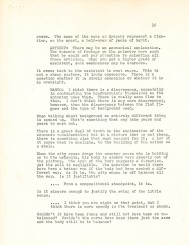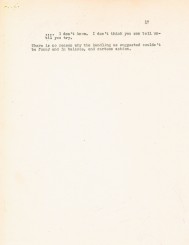Category ArchiveDisney
Bill Peckmann &Comic Art &Disney &Illustration 24 Jun 2011 06:43 am
Kelly’s 3 Caballeros
- Suppose we had a comic book version of The 3 Caballeros; wouldn’t that be fun to see? What if the artwork were done completely by Walt Kelly; would that make it a treasure? I think it does. Bill Peckmann made my week when he sent me the scans to the following comic book. As Bill wrote to me: “Beautiful stuff, like Barks’ art, it’s timeless, looks like it was done yesterday.”
Not only is the artwork out of this world, but the quality of the printing is brilliant. And the quality of the book, itself, is wonderfully well preserved. You only have to look below to read it. Take your time; this is great.
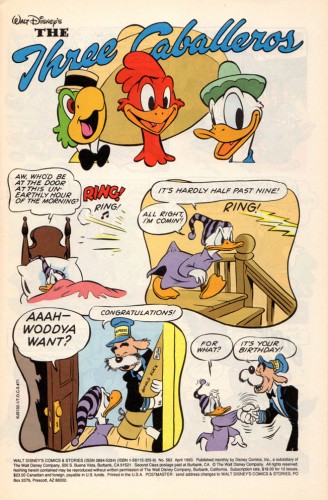 1
1
Many thanks to Bill Peckmann for sharing this gorgeous material with us.
Action Analysis &Animation Artifacts &Articles on Animation &Disney 23 Jun 2011 06:56 am
Action Analysis – March 29, 1937
- I continue, today, with the Action Analysis notes from the lectures given at the Disney studio by instructor, Don Graham. The lectures were often built around film sequences that were screened. In this lecture, they screened a sequence from Charlie Chaplin’s Easy Street as well as an in-house loop of a man walking with two children.
The animation personnel who attended and participated on this lecture included: Reuben Timmins, Izzy Klein, Jacques Roberts, Bernie Wolfe, Chuck Couch, Jack Hannah, Amby Paliwoda, Bill Tytla, and Bruce Bushman.
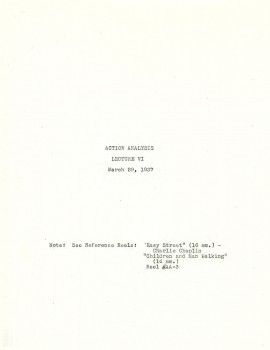
Cover
If you enjoy reading these Action Analysis notes, there are a wealth of them on Hans Perk‘s wonderful resource of a site, A Film LA. Many of them from earlier periods than these that I’m posting.
Animation &Disney &Frame Grabs &Layout & Design 20 Jun 2011 06:56 am
Pinocchio – Multiplane
- In highlighting the use of the multiplane camera in Disney’s animated films, the pinnacle has to be Pinocchio. Two specific scenes jump out in any mention of the multiplane camera: the move in to Gepetto’s workshop and the awakening of the village.
So let’s get right into it:
Sequence director: Ham Luske
Layout by Hugh Hennesy
Animated by “Music Room 2″
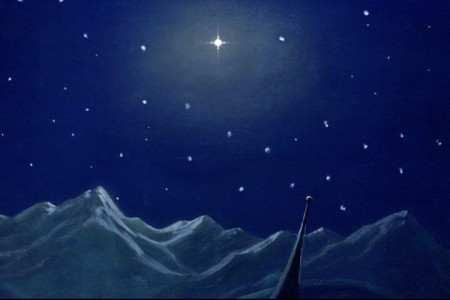 1
1Start in the sky with the wishing star that will play
a large part in the film in a couple of moments.
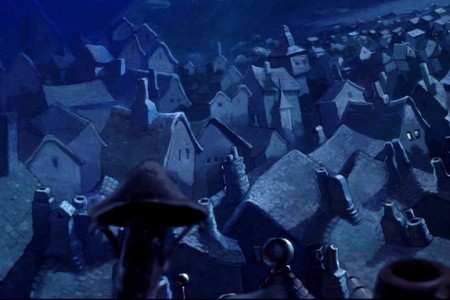 2
2
Circle down from the sky field to an overhead of the village.
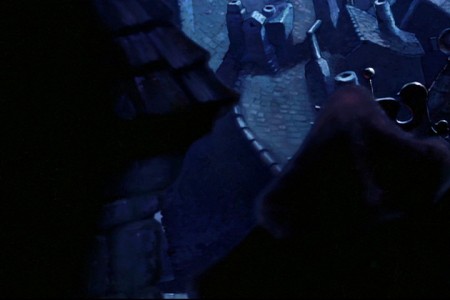 3
3
Continue moving down over the rooftops.
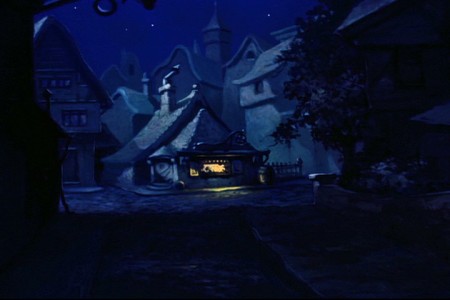 5
5
We first see Gepetto’s workshop from a distance.
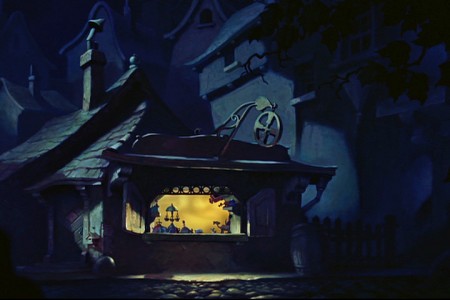 6
6
There’s a matching cut and we continue to move in.
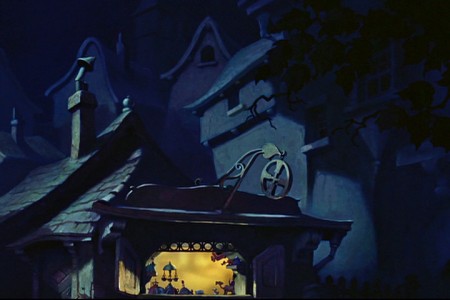 7
7
The POV of the camera is through Jiminy’s eyes.
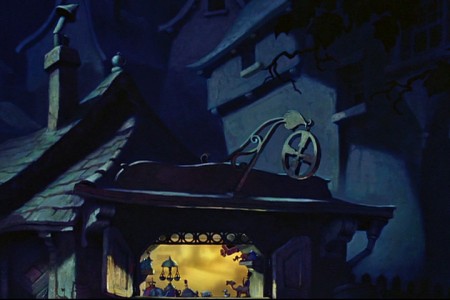 8
8
When he moves in, it’s in hops.
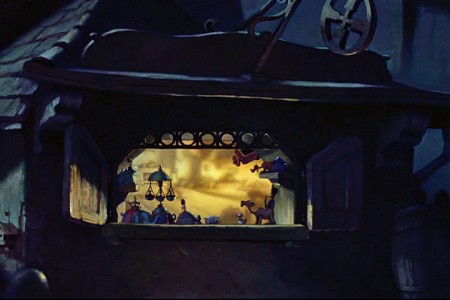 10
10
Leaps and bounds as he (through our camera’s eye) gets closer.
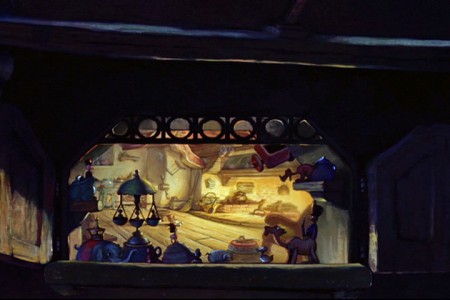 12
12
The warm window into the workshop begins to fill the screen.
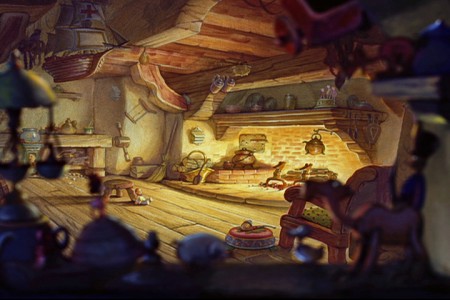 15
15
. . . looking into the workshop through the window.
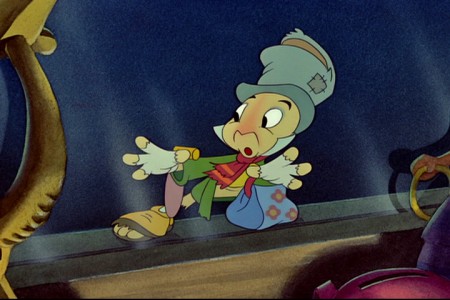 16
16
Cut to an interior shot – the interior side of the window.
Jiminy Crickey, with hands and face up to the glass.
Then we move onto a miracle of a shot that would be hard even for computer users. Today, we wouldn’t anchor the feet properly on all those kids walking and running about. It’s an amazing piece of animation history.
The sequence director was Wilfred (“Jaxon”) Jackson.
Layout by Thorington C. “Thor” Putnam.
The animators involved in this scene include: John McManus, Jack Campbell, Cornett Wood, John Reed, Art Babbitt, Milt Kahl, Don Lusk, and Sandy Strother.
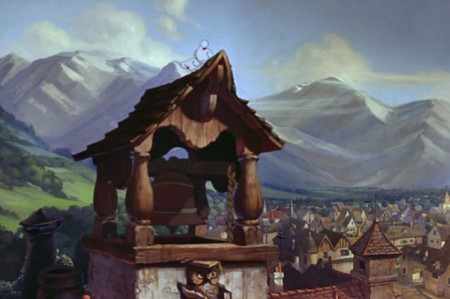 1
1The camera starts at the bell tower over the sleeping village.
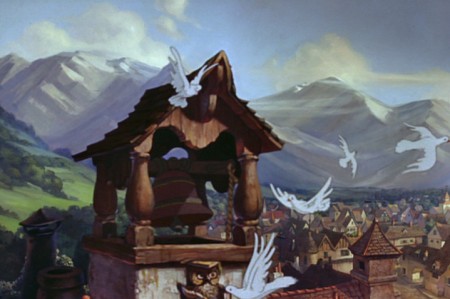 2
2
Doves fly out as the bell starts to chime.
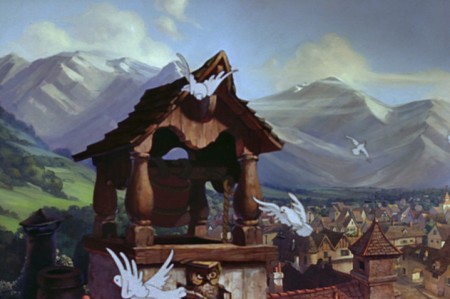 3
3
The birds fly out of focus as they move forward.
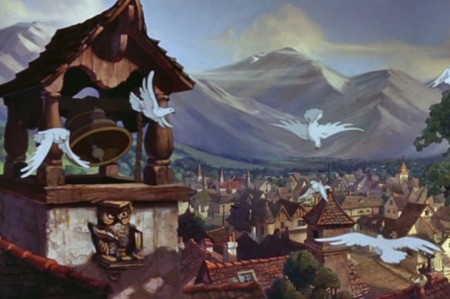 4
4
This allows the camera to start the big move
with the birds covering the tower.
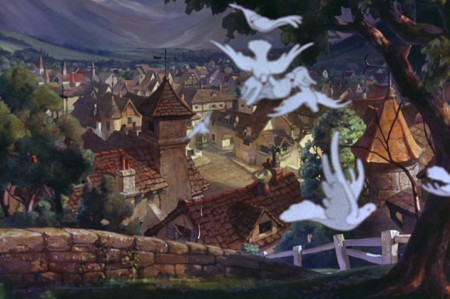 6
6
The camera pushes in to cross the
little footbridge to enter the town.
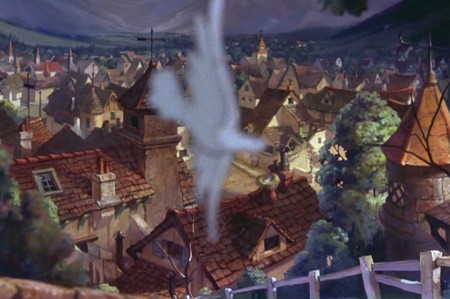 7
7
The last bird leaves us, and . . .
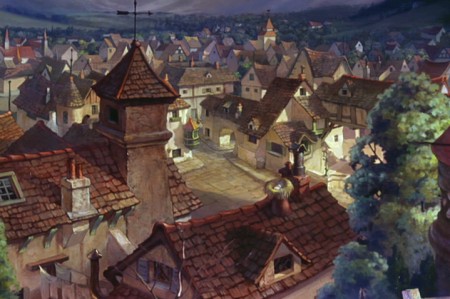 8
8
. . . we’re into the village.
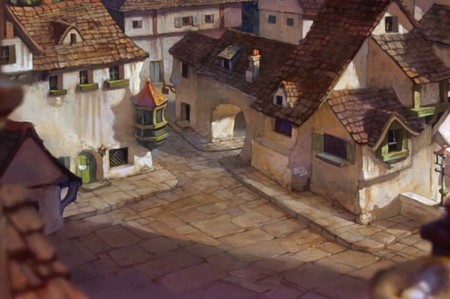 10
10
We move in toward the cross section of the town . . .
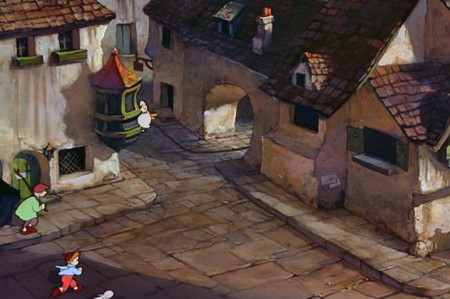 11
11
. . . as people start to come out of their houses.
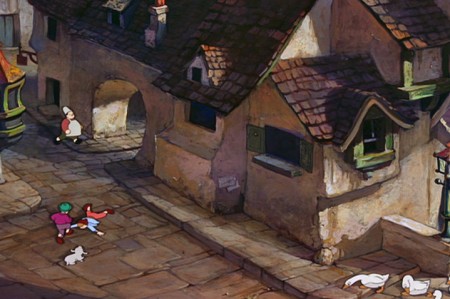 12
12
The camera moves to the right.
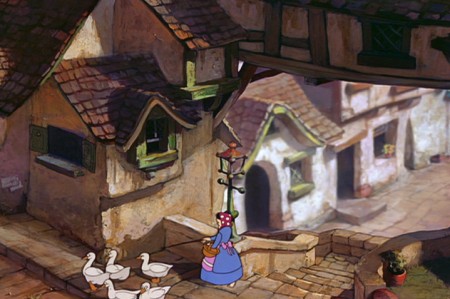 13
13
We move toward a woman with geese as the
camera goes under an overpass.
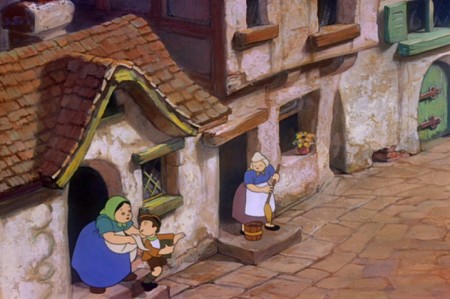 15
15
We head a few steps down as more
chldren come out running to school.
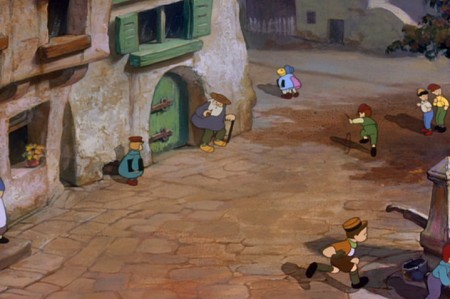 17
17
The camera continues to the right
seemingly led there by one running boy.
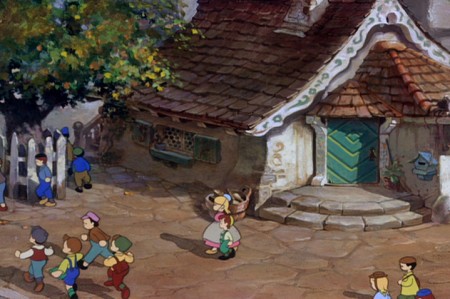 19
19
. . . reaching Gepetto’s house.
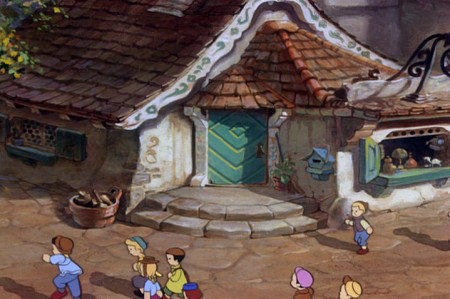 20
20
The camera moves in on the house.
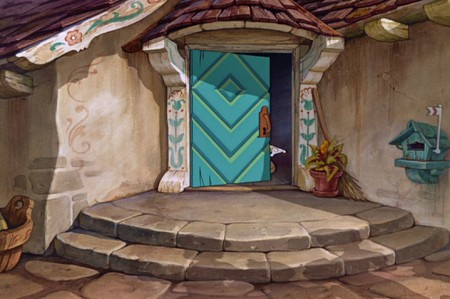 21
21
At this time we cut in and the big-time animators take over.
Milt Kahl handles Pinocchio, Art Babbitt does Gepetto, Don Lusk animates Figaro.
Although there are numerous beautiful scenes from Pinocchio that employ the multiplane camera, there’s one last sequence I’d like to concentrate on. This is where J. Worthington Foulfellow (“Fox”) and Gideon the cat cajole Pinocchio into following them so that they can sell him to the puppetmaster, Stromboli. This is a particularly interesting scene for the multiplane camera.
The sequence director was T. Hee.
Layout by Ken O’Connor.
The animators involved in this scene include: Ugo D’Orsi, Jack Campbell, Hugh Fraser, Charles Nichols, Marvin Woodward, Preston Blair, Milt Kahl and Charles Otterstrom and
Phil Duncan.
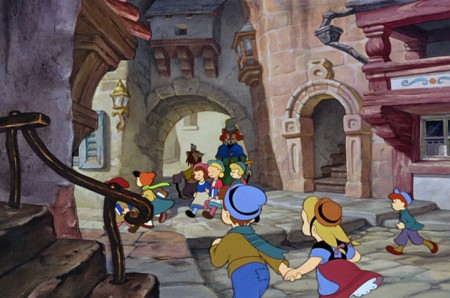 1
1The multiplane camera scene is several away from this,
but I feel as though this scene really sets up the big one.
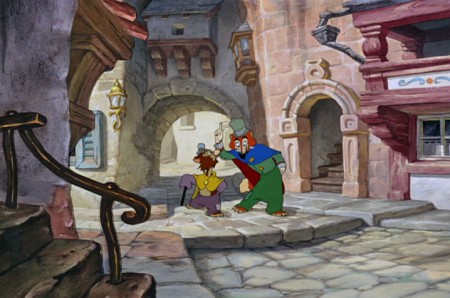 2
2
We properly meet the fox and cat as they walk through the town.
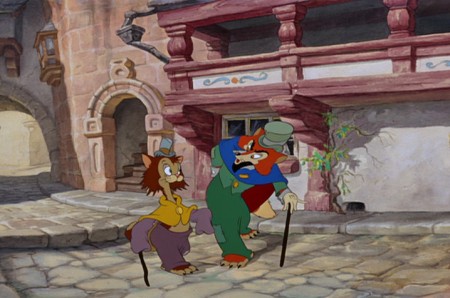 3
3
They are well into conversation.
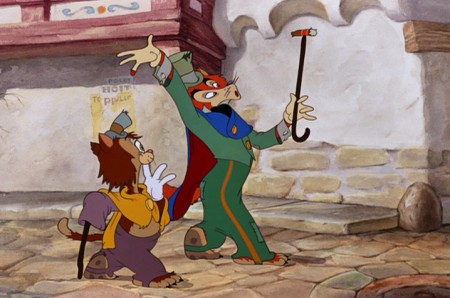 5
5
The fox picks up a cigar stub, telling us about their financial state.
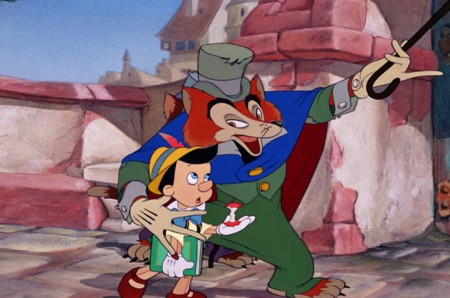 7
7
Several short scenes later, they run into Pinocchio and
coax him away from school to follow them to the theater.
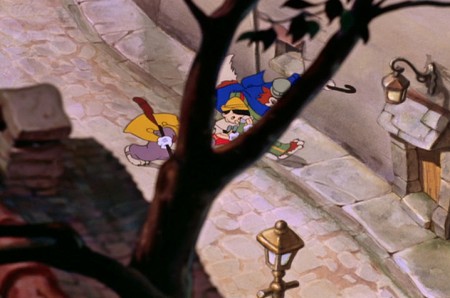 9
9
This cuts into the overhead multiplane shot.
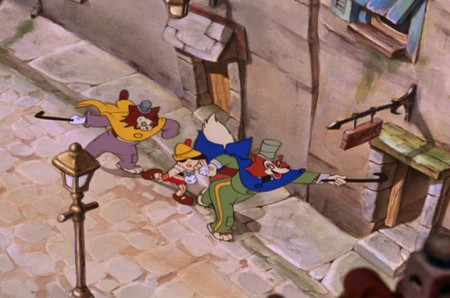 11
11
We watch from overhead with trees and ornaments
marginally blocking our vision of the characters.
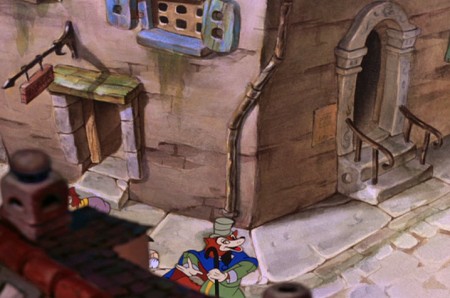 13
13
They turn a corner and the camera follows them.
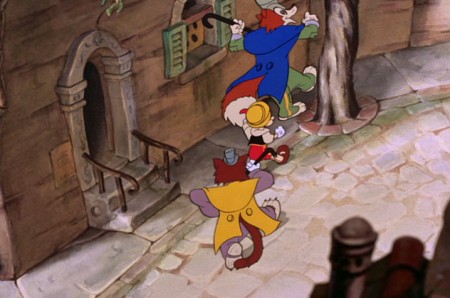 17
17
A quick circling of the tree.
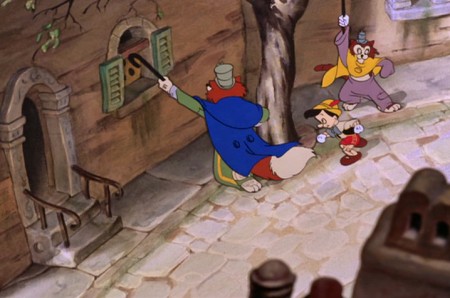 19
19
They do it again, but . . .
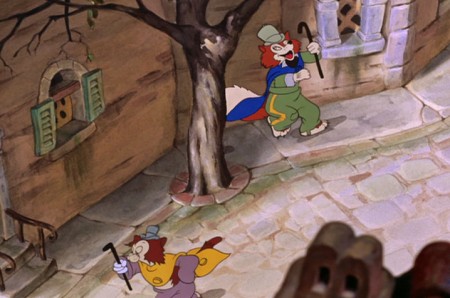 20
20
. . . Gideon the cat continues forward moving off screen.
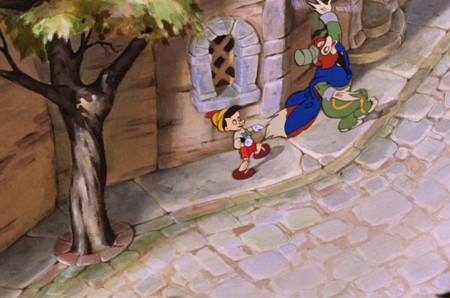 21
21
The fox and Pinocchio continue on the path.
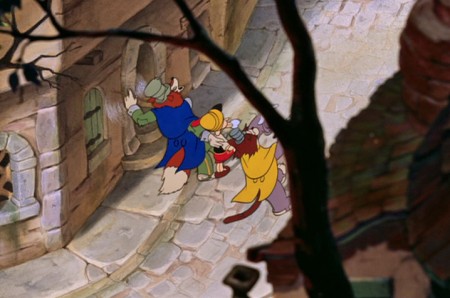 23
23
. . . catching up with them.
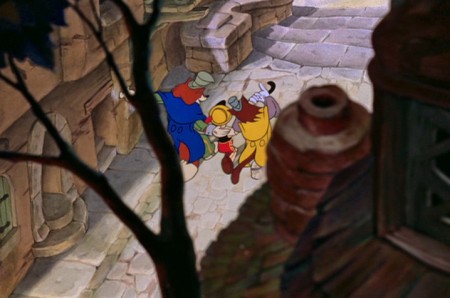 24
24
We view them through a tree and the side of a building.
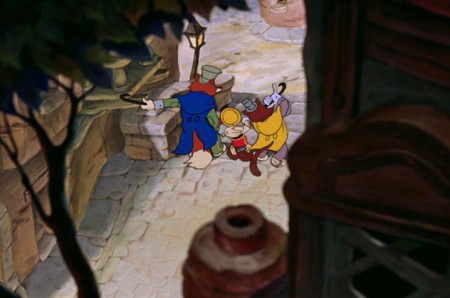 25
25
They go up several steps, but the camera stops.
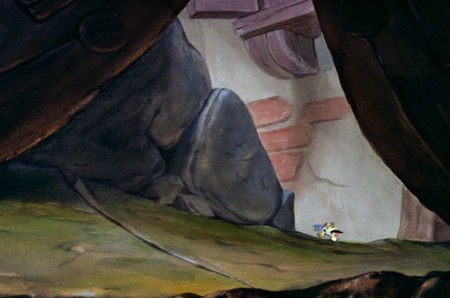 28
28
. . . the next scene, Jiminy Cricket is running. He’s late trying
to catch up to Pinocchio, thinking he’s on the way to school.
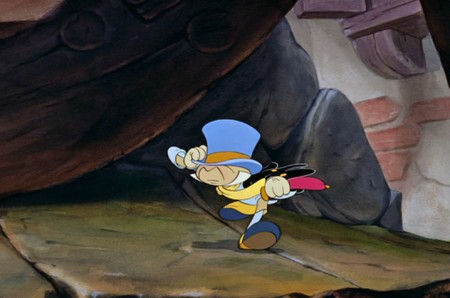 29
29
Jiminy is animated here by Phil Duncan.
David Nethery correctly points out in the comment section,
that Milt Kahl animated this scene.
Commentary &Disney 18 Jun 2011 07:34 am
Sight Seeing
- This past week Jonna commented on this blog: I can only imagine how it would have been to see one of the classics at a theater (I was born in the 90’s). It would have been great fun if any of you told about a premiere or screening that you’ve attended (e.g. the first time you saw Sleeping Beauty or something).
So I thought of a couple of memories I have of seeing some of the classic Disney films theatrically for the first time. So kiddies gather round Gran’pa while he tells you a story.
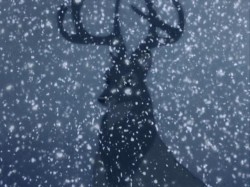 The first film I’d ever seen was Bambi. I don’t remember much about it, but I’m sure that the experience permeated my brain and sent me on a direction I could never return from. This is still one of my favorite classic Disney films. I’m not big on the cutesy aspects of the movie – specifically the “twitterpated” sequence, but I am big on everything else. Back in those days, there were often Surprise guests coming to the movie theaters to promote the shows. At this one particular event, to celebrate Christmas they drew back the curtain and had a pile of large gifts all wrapped in foil-colored gift wrap. Clarabelle the clown from the Howdy Doody Show was a special guest who was going to give out gifts to the boys and girls in the audience. He went through a short routine which ended with the supposed gift-hand-out. But it didn’t happen that way. Clarabelle took out his bottle of seltzer and started spraying the audience. The blustered theater manager called for the curtain to be closed, and that was that. Even at the age of 4 or 5, I knew we was robbed. No wonder I couldn’t remember much about Bambi.
The first film I’d ever seen was Bambi. I don’t remember much about it, but I’m sure that the experience permeated my brain and sent me on a direction I could never return from. This is still one of my favorite classic Disney films. I’m not big on the cutesy aspects of the movie – specifically the “twitterpated” sequence, but I am big on everything else. Back in those days, there were often Surprise guests coming to the movie theaters to promote the shows. At this one particular event, to celebrate Christmas they drew back the curtain and had a pile of large gifts all wrapped in foil-colored gift wrap. Clarabelle the clown from the Howdy Doody Show was a special guest who was going to give out gifts to the boys and girls in the audience. He went through a short routine which ended with the supposed gift-hand-out. But it didn’t happen that way. Clarabelle took out his bottle of seltzer and started spraying the audience. The blustered theater manager called for the curtain to be closed, and that was that. Even at the age of 4 or 5, I knew we was robbed. No wonder I couldn’t remember much about Bambi.
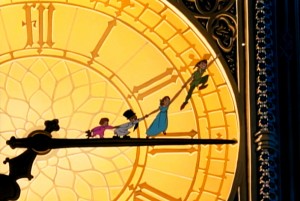 The second film I’d ever seen was Peter Pan. That would have been for the 1953 theatrical release. My father took me to one of those large movie palaces in upper Manhattan, the Loew’s 181st Street. I remember it playing with a film about a jungle cat of some kind; I’ve always remembered this as The Black Cat, but that title isn’t right. So I obviously don’t remember the title of the film, a B&W scary movie.
The second film I’d ever seen was Peter Pan. That would have been for the 1953 theatrical release. My father took me to one of those large movie palaces in upper Manhattan, the Loew’s 181st Street. I remember it playing with a film about a jungle cat of some kind; I’ve always remembered this as The Black Cat, but that title isn’t right. So I obviously don’t remember the title of the film, a B&W scary movie.
Re the animated feature, I remember most the swirls of color of Pan and gang flying; I don’t remember much else about it from that initial introduction. I was absolutely enamored with the moviegoing experience from The Black Cat to the brilliant cartoon. Remember, I was only 6 or 7 years old, at the time.
In 1955, I was in charge of about five kids (a couple of siblings and a couple of cousins) going to a local theater to see the NY premiere of Lady and the Tramp. Back then, it would cost 25 cents for a kid to get into the movies. When we’d gotten to the local movie theater for this film, they’d raised the price to 35 cents – more than our parents had allotted.
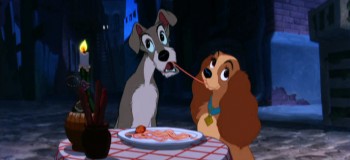 Outside the theater we were counting up our monies and trying to figure out how much we’d need to get in and buy some candy or popcorn for all of us. Within seconds my cousin announced that she’d lost her money, and it was obvious there wasn’t going to be enough for refreshments. The cousin started crying loudly, bawling until the movie theater manager came up to ask what was the problem. She spluttered out the word that she couldn’t afford any candy now that she’d lost the money to get into the movie. The manager just reached into his pocket and gave me an additional dollar. Enough money for movie and candy and more importantly it stopped my cousin’s screaming.
Outside the theater we were counting up our monies and trying to figure out how much we’d need to get in and buy some candy or popcorn for all of us. Within seconds my cousin announced that she’d lost her money, and it was obvious there wasn’t going to be enough for refreshments. The cousin started crying loudly, bawling until the movie theater manager came up to ask what was the problem. She spluttered out the word that she couldn’t afford any candy now that she’d lost the money to get into the movie. The manager just reached into his pocket and gave me an additional dollar. Enough money for movie and candy and more importantly it stopped my cousin’s screaming.
Once inside the theater I ignored them – even though the cousins were badly behaved and squirmed about through most of the show. I liked the film so much that I made the whole group sit with me to watch it a second time. That big, wide Cinemascope screen. It was heaven.
We did this often back then. I remember another time going to see Pinocchio with my younger sister, Christine. We sat through Pinocchio three times before we left the movie theater. That meant we had to sit through the second feature (usually some live action dud) twice to get to the third showing of the cartoon. My sister reminds me often enough that when she turned around she’d seen that the theater was empty except for the two of us. The usher stood in the back giving us the evil eye.
Prior to Sleeping Beauty‘s release, I’d been doing some reading. I’d received Bob Thomas’ The Art of Animation the previous Christmas, and I read it over and over at least a hundred times. I memorized every still in that book and couldn’t wait to get my eyes on Sleeping Beauty.
The film opened at Radio City Music Hall, and I was given permission to make one of my first trips downtown to see the film. An hour subway ride for a 12 year old. I went into this largest of movie theaters in the City, and I picked a great seat. The audience wasn’t overflowing; the show wasn’t sold out. But it was BIG.
The screen is enormous in that theater, and Sleeping Beauty was made to fill such a screen, especially in its Technirama debut. But somehow I came out of the theater disappointed. I don’t know what had gotten into me. I don’t remember any reason for disliking it. As a matter of fact, I absolutely love the film now. Those Eyvind Earle settings; the great animation of Maleficent; the dragon fight. There’s just a million reasons I have for loving it, but something about that first viewing left me cold. And I remember trying to analyze, at the time, what I thought was missing from the experience. I had no answer.
I’ve seen all of the pre-cgi Disney films in theaters. I also remember all the experiences of sitting through them. Dumbo and Alice In Wonderland were the only two that I saw on TV first. They were both special presentations on the Disneyland show. Eventually, I’d see them both in theaters at special screenings.
Of all of them, Dumbo still stands as my favorite though in a close tie to Snow White. There’s something they both have that goes beyond the brilliant animation and the graphics on screen. There’s an emotion there that they both have, not quite an innocence but more like a daring. Without consciously saying it, you felt the Disney people were shouting, “Look what we can do!” And they did do it. (By the time they did Fantasia, they were too conscious of what they could and had done, and they’d lost it – for me.)
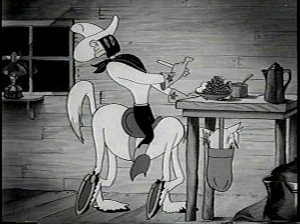 Eddie Fitzgerald is either a genius or a real-life looney toon – who I treasure. Probably, I think both; he’s at least an original. His blog is like no other in that he gives us real deep rooted comedy that makes you laugh aloud. He puts together these photo-montage storyboards creating a wacky movie that you just gotta keep reading, and when he’s on the mark, there’s nothing short of brilliance.
Eddie Fitzgerald is either a genius or a real-life looney toon – who I treasure. Probably, I think both; he’s at least an original. His blog is like no other in that he gives us real deep rooted comedy that makes you laugh aloud. He puts together these photo-montage storyboards creating a wacky movie that you just gotta keep reading, and when he’s on the mark, there’s nothing short of brilliance.
Bob Clampett did a wacky WB short called The Lone Stranger and Porky. Obviously, it was a parody of the big radio show of the time, The Lone Ranger. Well, Eddie takes off on that parody and does Clampett one better. It’s crazy and hilarious and you have to check it out (if you haven’t already.) The Lone Stranger (Parody) via photomontage.
Someone should finance this guy to make a real movie. This artwork would take cgi in a direction that hasn’t been considered before. Maybe then they’d have the first REAL animated cgi film instead of all these cutesy viewmaster things we get.
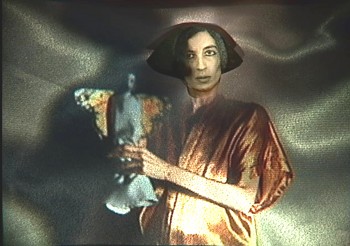 Last week I started a new series that I hope will go on forever. I’ve been interviewing Independent animators, the ones who are trying to make artful animation on their own. They don’t have the dollars that a Dreamworks would, but they’re using all of their resources to make movies that have something to say.
Last week I started a new series that I hope will go on forever. I’ve been interviewing Independent animators, the ones who are trying to make artful animation on their own. They don’t have the dollars that a Dreamworks would, but they’re using all of their resources to make movies that have something to say.
The first post was an interview with George Griffin, who has been something of an inspiration to me. Upcoming this Tuesday will be an in depth look at the amazing career of Kathy Rose. She takes animation, mixes it with dance and Performance Art and comes out with amazingly original work. I’m having a good time putting these pieces together, and there are so many who deserve the attention.
- I have one last bit of self-aggrandizement to post. THis coming Wednesday, June 22nd, HBO will premiere the latest Special we’ve done for them. (Notice how I date myself by calling it a “Special”. That’s what they were called when I was younger. These days I only know the industry word for them, “one offs”. I don’t like to think of my show as a “one off”; it’s a Special.)
The show is about half animated; the other half consists of kids saying the wackiest things. It’s fun. So there you go.
Action Analysis &Animation Artifacts &Articles on Animation &Disney 16 Jun 2011 07:32 am
Action Analysis – March 22, 1937
- Today we continue with the Action Analysis notes from the lectures given at the Disney studio by instructor, Don Graham. The lectures, at this point, were generally built around film sequences that were screened. Oftentimes they were past Disney films, other times they were live action sequences from other studios. In this lecture, they were scenes from the Clark Gable feature, San Francisco. (This can be rented from Netflix or other distributors or can be often seen on TCM.)
The animation personnel who attended and participated included: Izzy Klein, Joe Magro, Jacques Roberts, Jimmie Culhane, Bill Tytla, Eddie Strickland, Bill Shull Moe Gollub (misspelled as Gallub) and Bernie Wolfe.
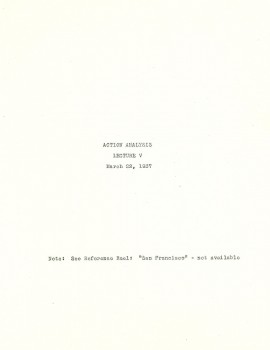
Cover
Commentary &Disney &Frame Grabs 13 Jun 2011 06:33 am
Peter Pan Multiplane
- I had remembered Peter Pan as utilizing the multiplane camera quite a bit to set up the show. In the most obvious ways, where I thought they used the camera, I was wrong. There’s, of course, the one famous flying scene with Peter, Tink and the family over lots of clouds. But other shots of London and the opening of the house are not dimensional. They were painted on one level.
In a way, this film, despite the success of Cinderella, is an equally austere production. Gone are the days of Pinocchio and Fantasia where the multiplane camera was enormously effective and often used. Hello to the days of tight budgets.
Let’s take a look.

This is the opening once we hit London (down from a star).
We pan from London to the fog.
No multiplane camera use is evident. It’s a single-level Bg.
Dissolve to
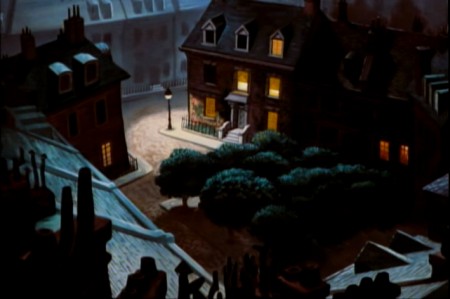 1
1
The Darling townhouse. Camera trucks in slowly.
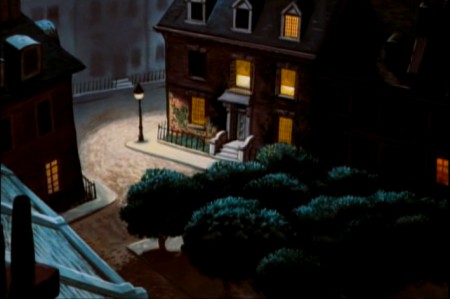 2
2
There are no separate levels, no use of the multiplane.
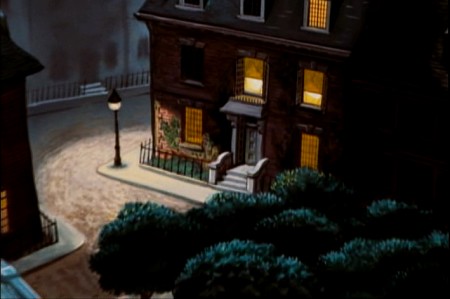 3
3
This is disappointing given how good the similar scene which opens
101 Dalmatians looks using a simple multiplane setup.
Once inside the Darling household there is no obvious use of the multiplane.
The next scene to question starts as Mr. & Mrs. Darling prepare to go off to their party leaving the children behind.
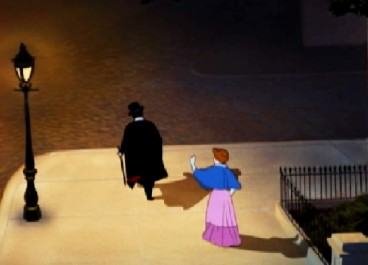
This next pan starts at the base as the Darlings
walk away from the camera into the distance.
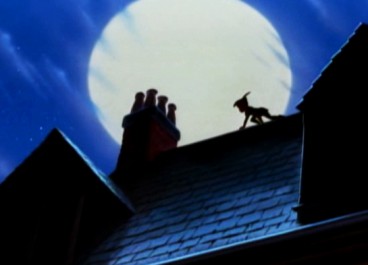
We pan up to the rooftop to see Peter Pan in silhouette.
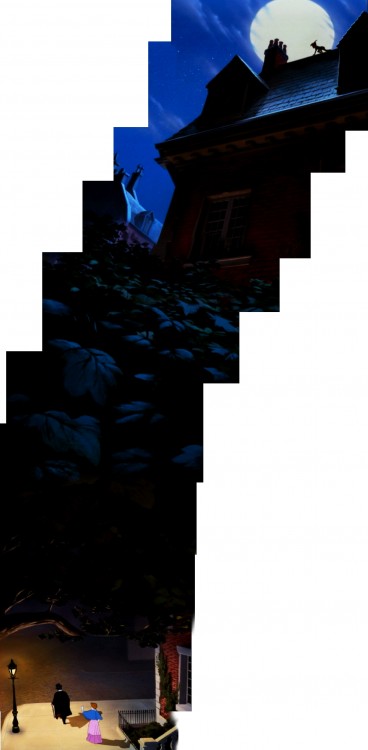
This is the full Bg.
There is no use of the multiplane camera.
Nor are there separate levels – it’s all one piece.
So, it would seem that the multiplane has not been used to this point.
The big flying scene comes just as they’re about to fly out of London and on to Neverland. It serves as the bridge from everyday life on to the magical land of Peter Pan. You need something big here, and they’ve got it – one of the biggest multiplane scenes ever. The layout for this scene is extraordinary, and the animation couldn’t be better. It’s quite a scene.
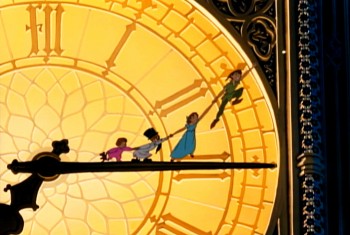 1
1We cut from this shot of the clock.
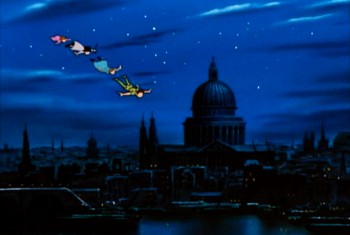 2
2
Peter & gang fly over clouds on flat Bg.
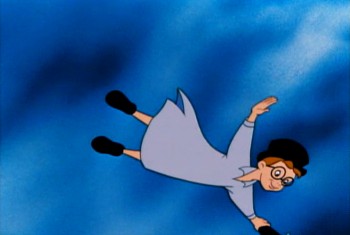 11
11
All done with some brilliant animation.
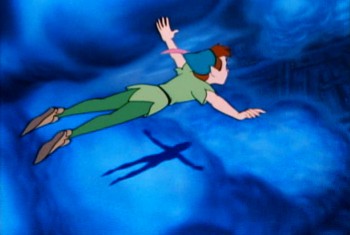 21
21
Suddenly the bottom drops out and it’s multiplane.
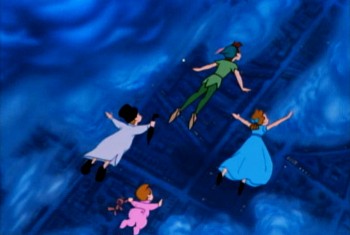 25
25
The camera also turns to have the characters flying North.
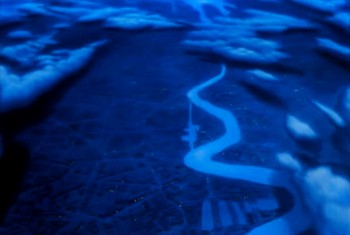 31
31
The camera zooms past them . . .
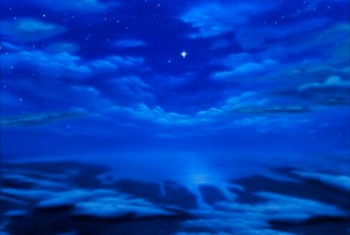 32
32
. . . and moves up to star.
There are one or two other small uses of the multiplane camera on Neverland. Typical of these is this shot of the Indian Village. As we pull in, only the sky is separated and allowed to go out of focus as the camera moves in.
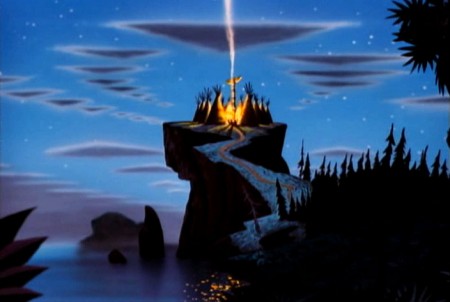
.
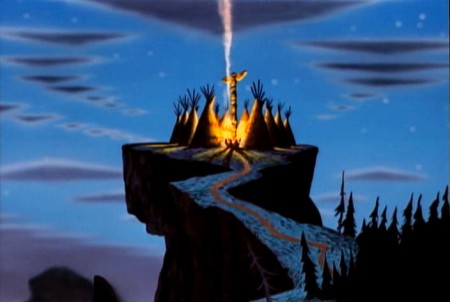
But basically that would seem to be it for the use of the multiplane camera in the film. There’s the one big scene, the flying scene, which shows it off as well as any scene to that point in Disney animation, and a couple of other much smaller scenes.
But on second look we find that there was some use of it in the nursery.
The Bgs contain stripes and obviously brought some concern that there would be strobing, especially in cutting from one set of stripes to another – one CU to another.
It appears to me that they put the Bgs for the closeups out of focus by putting them on a lower level of the multiplane camera and shot the characters in focus. It’s a simple trick (given there were no camera moves) that didn’t up the budget very much.
AfterNote: I am wrong about this. Milt Gray, in the comments section, had proof that the Bgs were painted with Airbrush to soften them.
I’d recently read that they were thinking of utilizing this trick at one point in Cinderella. They ultimately decided against it. (I think it was an interview with Wilfred Jackson, but I haven’t located that reference quickly. When I do, I’ll put the quote in here.)
Here are a number of examples:
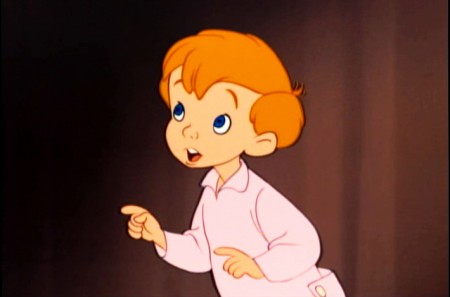 1
1There’s a soft focus on the Bg – not very extreme.
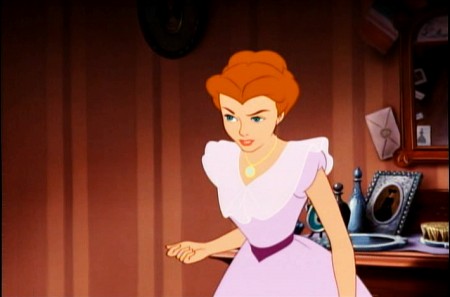 2
2
We go from this half-shot leaving the shot in focus . . .
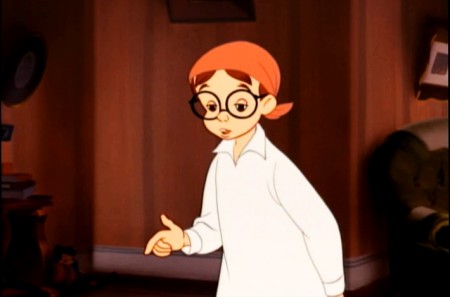 3
3
. . . to this shot of John where the focus is soft.
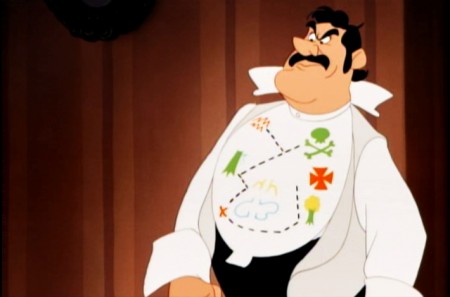 4
4
Father stands, here, with an in-focus Bg.
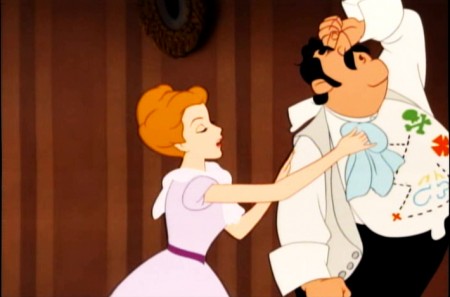 6
6
Back to the parents with the Bg still in focus.
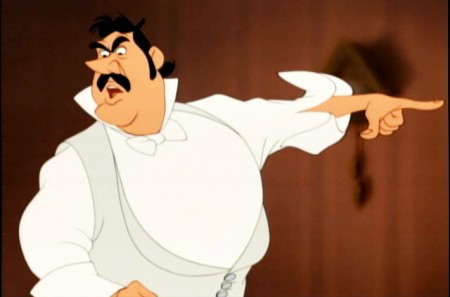 8
8
Now father stands against a very soft Bg.
It probably didn’t work cutting back and forth with the Bgs in focus.
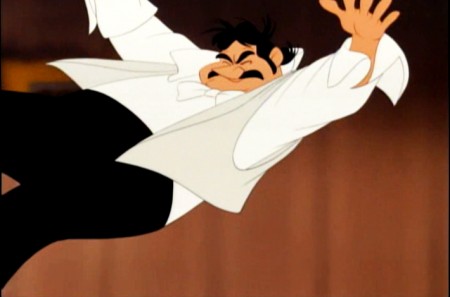 9
9
This scene is the only one with a big camera move as . . .
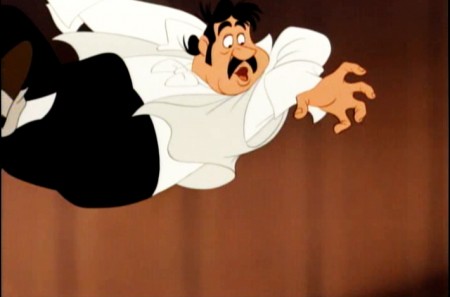 10
10
. . . father flies across the room and . . .
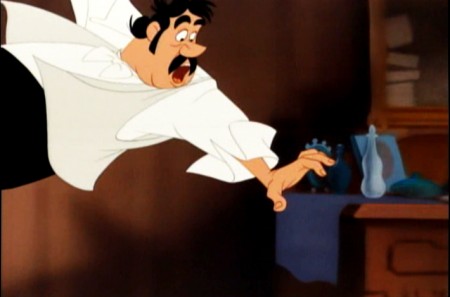 11
11
. . . hits a night table.
The stripes are out of focus. The foreground night table is
in focus, meaning it would be on the same level as father.
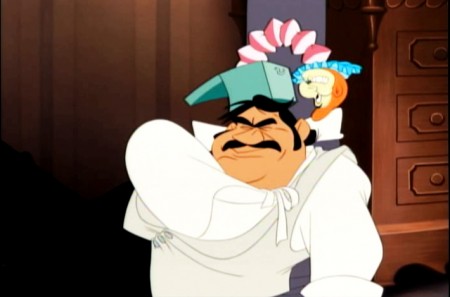 12
12
The finish comes a couple of scenes later. It’s all, now, in focus.
Back in the nursery at the end of the film, the soft focus comes back in two or three short scenes.
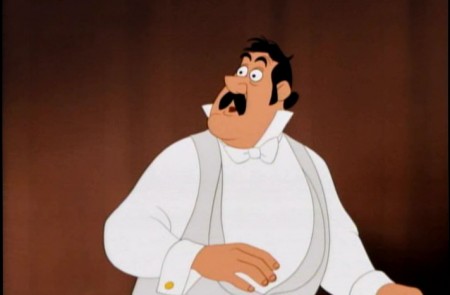
This shot of the father is typical of the soft Bgs. They seem to build
from in-focus to getting softer and softer (behind father) as he realizes
that he’s “seen that ship before.”
Many of the other shots at this point are in focus.
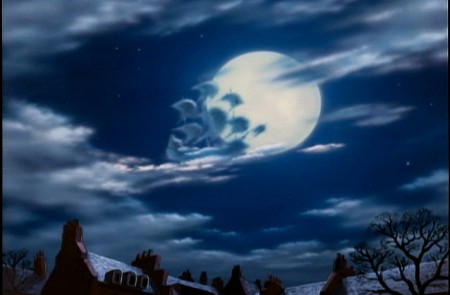
I wonder, in this shot, if the ship were on another level so that it would read soft.
This scene has such magic in it, somehow I think they HAD to use the multiplane camera.
Action Analysis &Animation Artifacts &Articles on Animation &Disney 09 Jun 2011 07:14 am
Action Analysis – March 15, 1937
- Here is yet more of the Action Analysis class notes transcribed at the Disney studio in this lesson wherein they study clips from several films including a Laurel & Hardy short and a Charlie Chaplin short. If you can get your hands on either (Netflix might have them) it’ll help you to understand the talk.
Participants include: Teacher, Don Graham, animators, Izzy Klein, Joe Magro, either Jacques or Bill Roberts and Stan Quackenbush, storyman Chuck Couch, and BG artist, Dick Anthony.
The complete body of these notes really works as a masterclass in animation for those who are interested and take the time to read them.
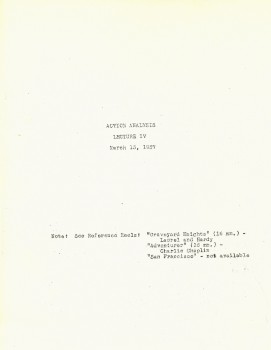
Cover
Disney &Frame Grabs &Layout & Design 06 Jun 2011 06:40 am
Cinderella Multiplane
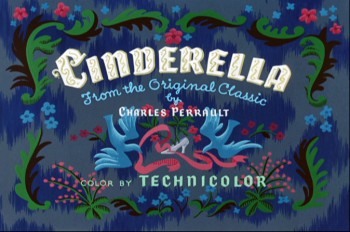 - Cinderella was produced on a rather tight budget. After having produced a number of package films, containing collections of shorts, the film was Disney’s attempt to get back into features. His coffers were emptying, and he wanted to get back into the mainstream. They tightened the budget for the film and produced it quickly.
- Cinderella was produced on a rather tight budget. After having produced a number of package films, containing collections of shorts, the film was Disney’s attempt to get back into features. His coffers were emptying, and he wanted to get back into the mainstream. They tightened the budget for the film and produced it quickly.
As such, I was curious to see how many multiplane shots were in the film. I was only able to locate five of them, and they’re all uncomplicated shots – all with a simple camera move in. They didn’t allow for much in the way of focus changes and kept focus pretty mcuh constant throughout them all. There was nothing elaborate built into the camerawork.
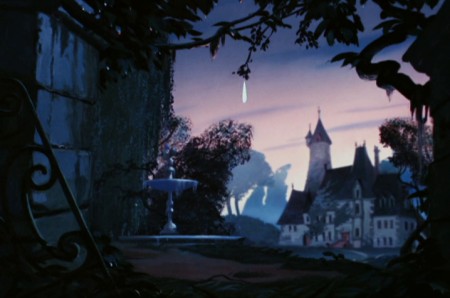 1
1
Seq 1.1 Scene 55
This is the opening of the film, after the storybook section reveals the back story.
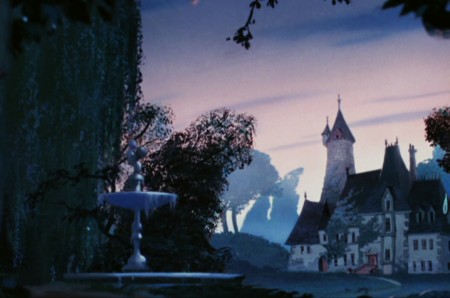 2
2
The camera slowly begins to move in.
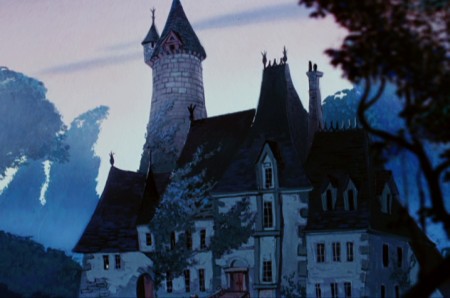 4
4
We’re starting to see some marginal soft-focus in the foreground elements.
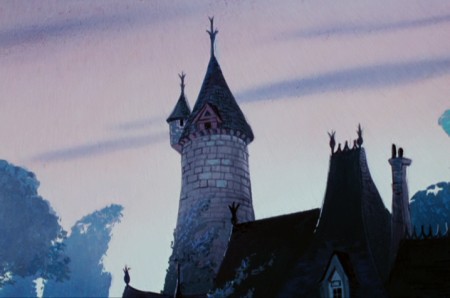 5
5
The final setup before the dissolve into Cinderella’s room.
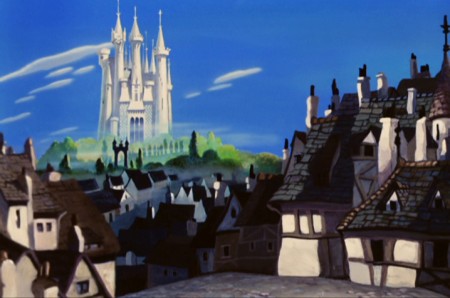 1
1
Seq 2.0 Scene 1
The town with the castle in the distance.
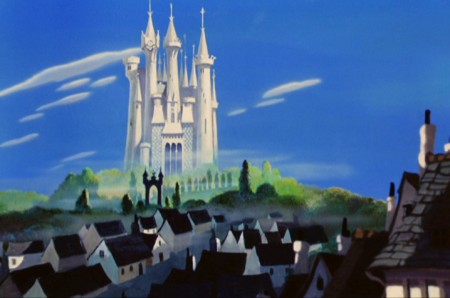 2
2
The camera moves past the town into the castle.
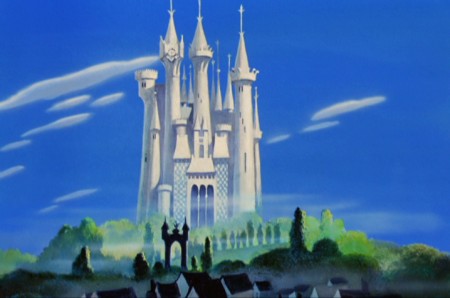 3
3
We end on the castle before dissolving to the interior of the castle.
With this shot we have images of some of the elements used to create the multiplane shot.
The artwork looks to be for a night version of the same shot. I haven’t seen this in the film.
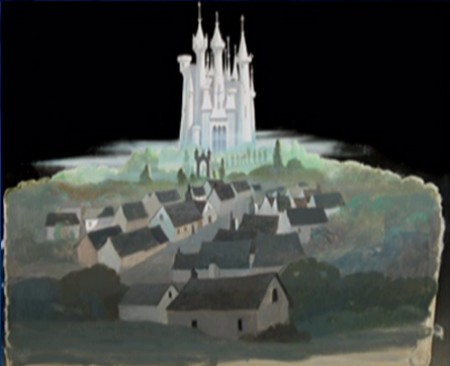 3
3
Level #3 – the castle with sky separate.
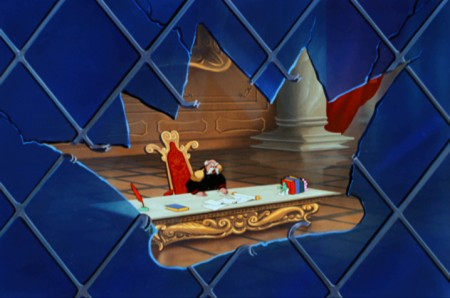 1
1
Seq 2.0 Scene 2
The camera moves through the glass. King is out of focus/ glass is in focus.
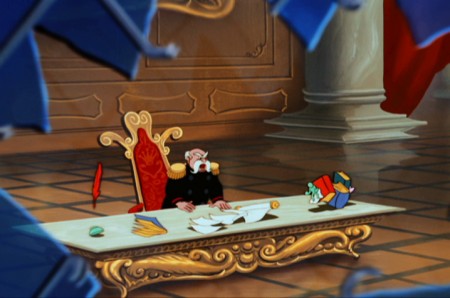 2
2
As we get closer, king comes into focus and glass out of focus.
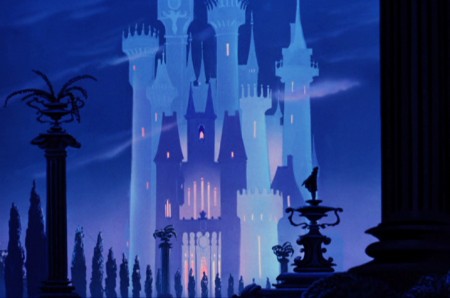 1
1
Seq 4.0 Scene not listed on drafts
Cinderella’s coach is on the way to the ball.
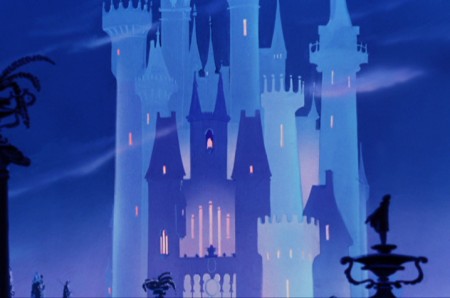 2
2
The camera moves in on the Palace.
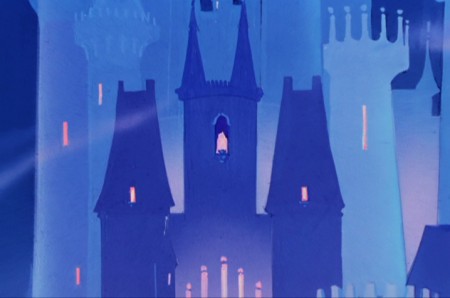 3
3
The final setup before the dissolve to the next shot.
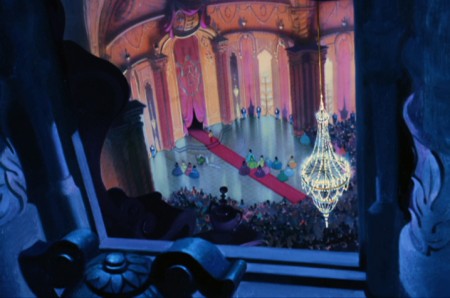 1
1
Seq 4.0 Scene 1
We move in from an aerial view of the ball – through a window.
Next week I’ll take a look at the multiplane camera in Disney’s feature, Peter Pan.
Books &Commentary &Disney 04 Jun 2011 06:52 am
Don Hahn’s Brainstorm & Other Brickabrack
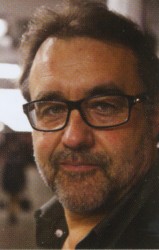 - Don Hahn is a busy guy. Aside from producing Beauty and the Beast, The Lion King and The Hunchback of Notre Dame, he’s produced the Disney nature documentaries Earth, Oceans and African Cats. He’s also directed Waking Sleeping Beauty about the renaissance of Disney animation.
- Don Hahn is a busy guy. Aside from producing Beauty and the Beast, The Lion King and The Hunchback of Notre Dame, he’s produced the Disney nature documentaries Earth, Oceans and African Cats. He’s also directed Waking Sleeping Beauty about the renaissance of Disney animation.
Mr. Hahn has also written a number of books, starting with Animation Magic through Disney’s Animation Kit as well as The Alchemy of Animation up to his most recent (non-picture) book, Brainstorm: Unleashing Your Creative Self.
I recently picked up Brainstorm and have read it, so I thought I’d write a few comments. I believe this is an updated and expanded version of the earlier book, Dancing Corn Dogs in the Night. In either incarnation, it’s an easy-to-read book with a light and casual sense of humor. Mr. Hahn is very comfortable in the skin of the light raconteur; he often tells stories that are witty and help to direct his point. This is a book about the creative process, and it tries to tell people how to get their artistic side out of their bodies.
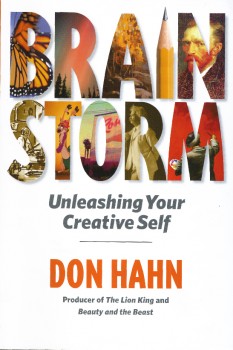 This process is best told in a story wherein a younger production manager calls Hahn in the evening asking to come up to his office. When they meet, the young executive says he needs advice: he’s trying to write a screenplay and is stuck. He wants Hahn’s advice as to how to get going. Hahn tells us that “the most successful writers write because they have to.” The conversation, he tells us, really came down to how much the writer “really felt he had to write.” Hahn says that he felt the writer had shortchanged himself; he needed the courage to be honest with himself and make big changes in his career path. “He had to be authentic.”
This process is best told in a story wherein a younger production manager calls Hahn in the evening asking to come up to his office. When they meet, the young executive says he needs advice: he’s trying to write a screenplay and is stuck. He wants Hahn’s advice as to how to get going. Hahn tells us that “the most successful writers write because they have to.” The conversation, he tells us, really came down to how much the writer “really felt he had to write.” Hahn says that he felt the writer had shortchanged himself; he needed the courage to be honest with himself and make big changes in his career path. “He had to be authentic.”
There are many such stories like this in the book, and they all feel authentic. It’s just that they all feel as though they’re adding up to be a Self-help book. There are many lines which I had to squirm through with ideas that no one would really have to tell an artist. The hardest line for me in the book is: “Shakespeare must have loved putting words together. He was like a phrase machine. If one guy was able to be that innovative with language in the sixteenth century, then why can’t we be more innovative?” The answer, of course, is that Shakespeare was the greatest living writer-as-artist that there ever was. He was a genius. I am not a genius, but I would never compare myself with Shakespeare. Maybe Stephen Sondheim might be comparable, but don’t ask me to be innovative so that I can be more like Shakespeare! I think of myself as someone trying my entire life to be an artist; I don’t have a problem being innovative, but I also can’t put myself in the same sentence with Shakespeare.
As such, I had a bit of a hard time reading it. I never in my life have had a hard time expressing myself artistically and have never needed advice on how to allow the muse to flow from myself. I don’t have a hard time getting started; more so I have a hard time stopping.
It was difficult for me to contain myself while reading a how-to book on the artistic process. “Art for Beginners” is not something I really needed to read, however the stories told kept me moving on through the book, and I’m sure they’ll entertain you as well. There’s the story of Dick Williams disappearing from his studio while preparing for a deadline in animating a scene, only to return very late in the deadline to whip it out. He had his own process of preparation. Or there’s the story of meeting Woolie Reitherman for the first time and hearing him call John Huston during the meeting (which leads to Hahn’s casual comparison between Reitherman and Huston.)
There are many stories we haven’t heard before, and for that alone, I felt the book was worth reading. I also appreciated that it might help some people to get the creative process going, if they are novices trying to think of themselves in artistic terms. I assume there are many such people out there.
2000
- This is the 2000th post I’ve put up.
No wonder my typing fingers are sore.
____________________
A Bad Start
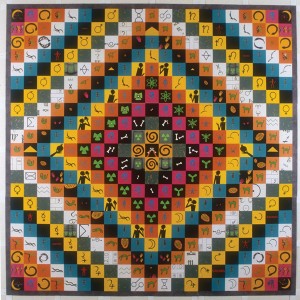 - Things started off roughly this week. First thing in the morning on Tuesday I was greeted with the news that Karen Aqua had died. It took a lot out of me that day. To lose so enormous a talent is difficult; to lose a friend in the animation community is even harder. We lost both with that email.
- Things started off roughly this week. First thing in the morning on Tuesday I was greeted with the news that Karen Aqua had died. It took a lot out of me that day. To lose so enormous a talent is difficult; to lose a friend in the animation community is even harder. We lost both with that email.
I posted my little post – not much more really, than Karen’s husband, Ken Field‘s telling of the news and information about a memorial service (when I know more about that I’ll pass the news on) – , but I found a wealth of Independent animators checking in to express thier feelings. Everyone from Candy Kugel to Kathy Rose, Joanna Priestly to Paul Glabicki. _____________Civilization by Karen Aqua
I realized with that open expression that there really is no place for the Independent animator to check in for news or stories about their work. Non studio artists are left to their own blogs and websites to promote their animation while multi-mega-budget films are given top headlines over whether or not they’ve broken the $100 million mark. It just doesn’t seem fair to me.
So I’ve decided to step tentatively into this water. I’m going to devote a day of the week (probably Tuesday or Thursday) to writing about some filmmaker/artist/animator. It’ll probably be a mix of reviews, interviews and bios of some of our best artists. Shameless promotion for the films that deserve more attention.
Independent animators: don’t hesitate to contact me if you have anything you’d like to promote or news you’d like to share or even if you’re just interested in having your films be a focus for a day.
- Speaking about that post, I was glad to see Cartoon Brew finally comment on Karen’s passing by directing people to my blog, but I was annoyed to see another blog lift my piece verbatim and post it on their site – not even separating my stills from their enlarged versions so that when you clicked a still it sent you to my site. Ordinarily, I wouldn’t mind, but I do like when they give my blog credit. Unfortunately, there was no naming of the origination of this post, and the blogger passed it off as if it were his own.
People, we have to have some modicum of courtesy out there !
I also contacted Ron Diamond at AWN to make sure they’d have a note about Karen on their site, (I knew they would, they’re usually just a tad slow in getting it done) and, indeed, they said one was in the works. It was posted that same day.
- The Holland Animation Film Festival has made a decision to move its date from Autumn to Spring. That means their next Festival will take place in the Spring of 2012, and there will be no Holland Animation Festival in 2011. The next edition is from 28 March through 1 April 2012.
I haven’t attended any of their Festivals, but for some reason I suspect this is one of the better ones out there. Maybe I should aim to go in 2012 if I can ever finish another film.
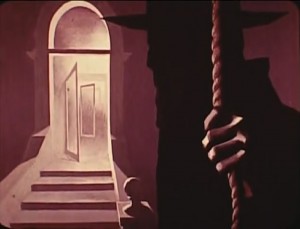 - Hans Bacher has posted a number of beautiful posts on Paul Julian‘s work on The Hangman, a film he directed in 1964. Go here and here to see the two already up and they will lead you to past posts on Julian’s work.
- Hans Bacher has posted a number of beautiful posts on Paul Julian‘s work on The Hangman, a film he directed in 1964. Go here and here to see the two already up and they will lead you to past posts on Julian’s work.
In the past, I’ve posted a couple of Julian’s books, Toot and Piccoli.
I’ve also done posts about Paul Julian‘s work for Roger Corman. You can see those posts here.
You can see a reddish print on YouTube here.
Action Analysis &Animation Artifacts &Disney 02 Jun 2011 07:03 am
Action Analysis – March 3, 1937
- As we all know, Don Graham conducted night classes at the Disney Studio between 1936 and 1938. They usually revolved around a particular theme and used clips from appropriate movies, whether Chaplin or Disney’s own shorts.
In this particular Action Analysis lesson, te use of secondary motions was discussed, and clips from “Country Cousin” were screened and commented on. The participants include Izzy Klein, Joe Magro, Don Williams, Jack Hannah Dave Hilberman, Bill Tytla, Shamus Culhane, Chuck Couch, Dick Anthony and Don Strickland.
Many of the lecture series were posted on Hans Perk‘s enormously helpful site, A Film LA. As a matter of fact, you can find the previous lecture on “Primary Actions” here.

The cover of the lesson.
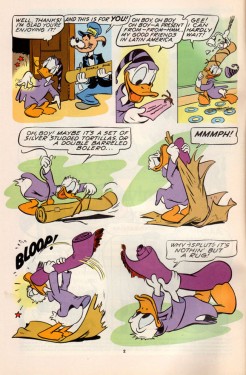
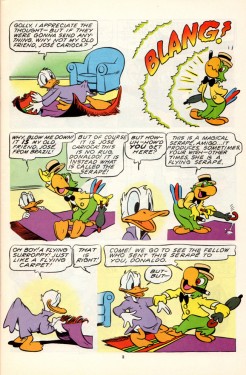
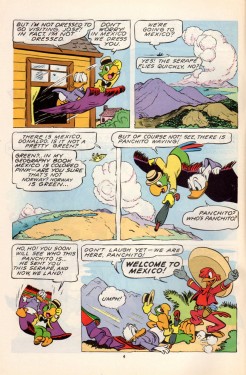
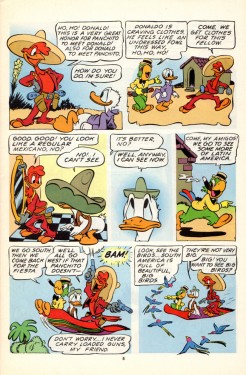
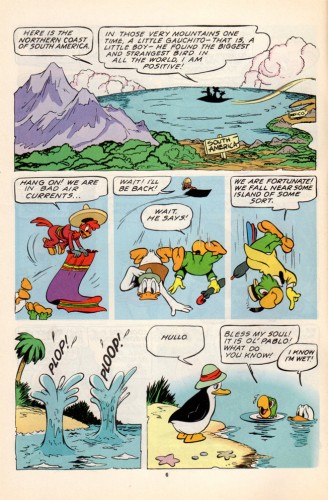
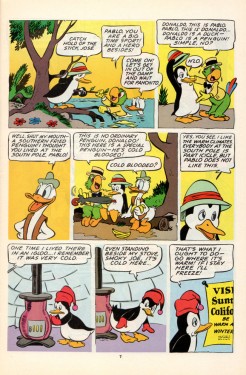
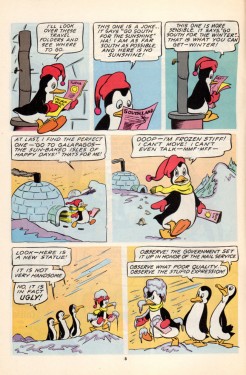
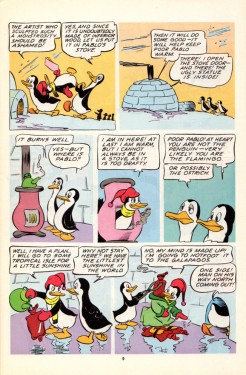
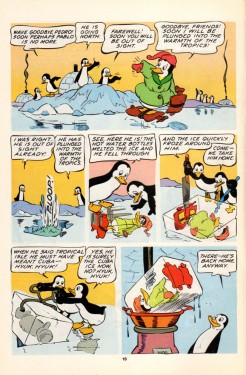
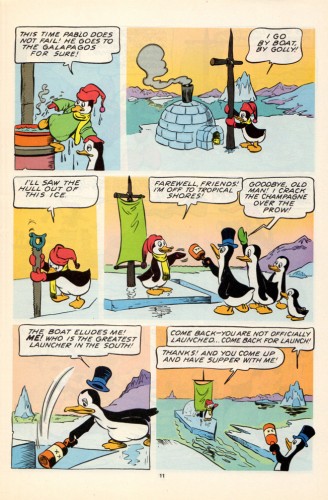
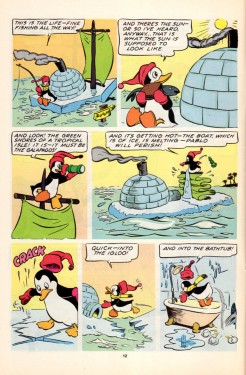
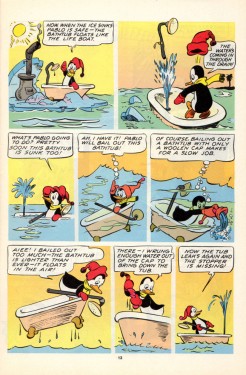
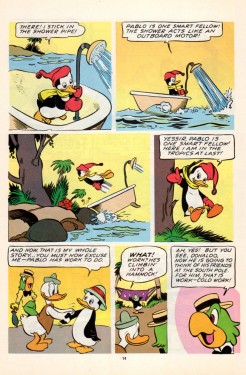
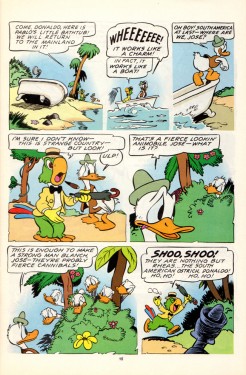
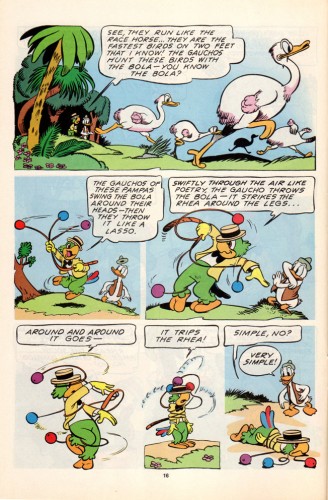
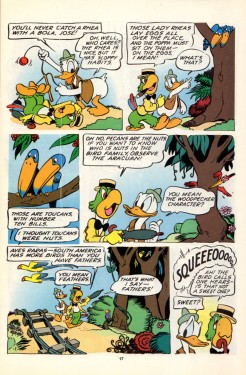
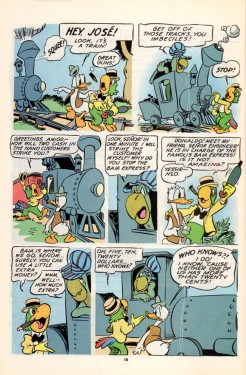
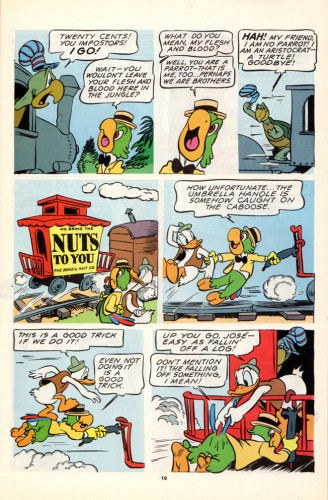
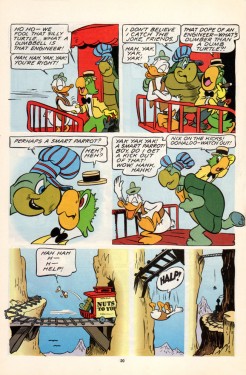
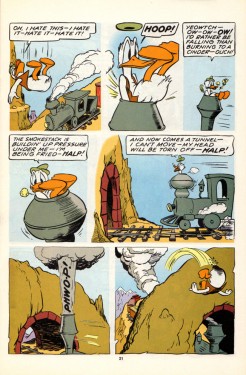
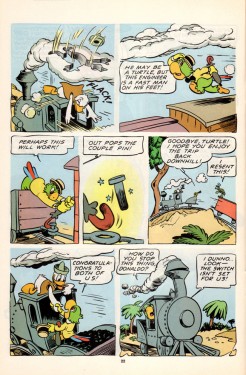
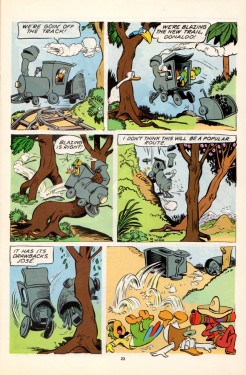
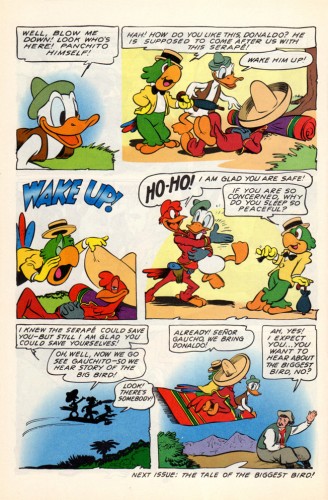
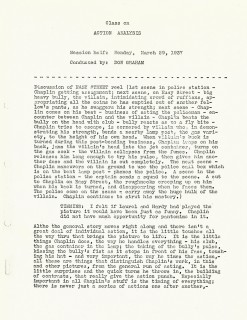
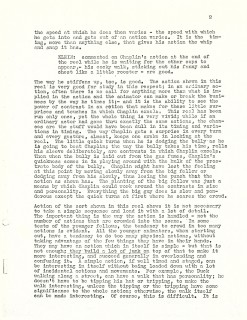
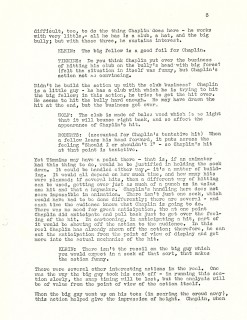
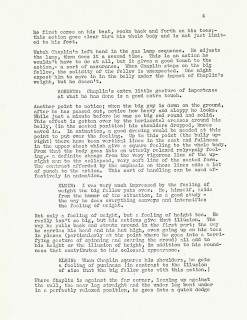
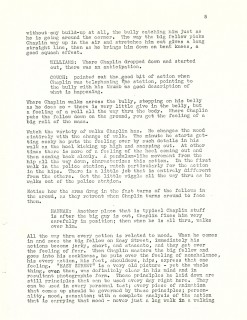
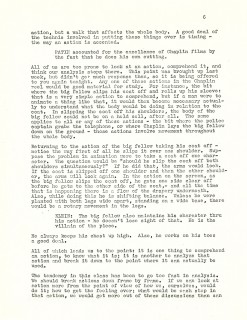
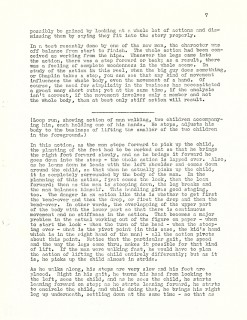
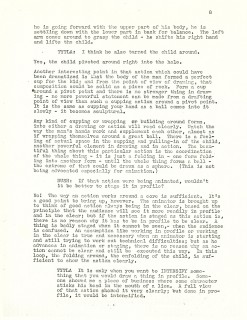
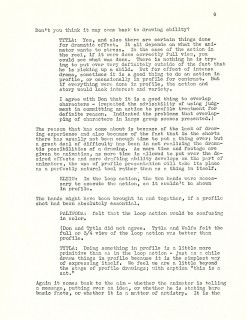
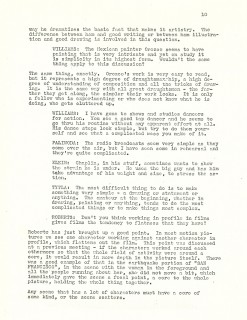
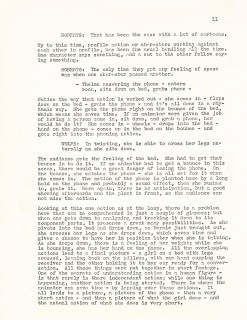
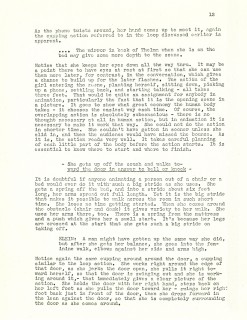
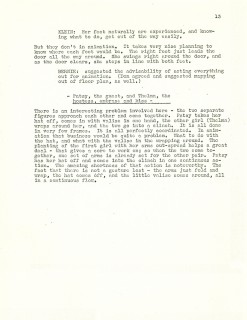
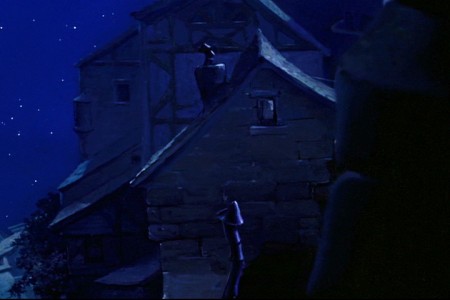
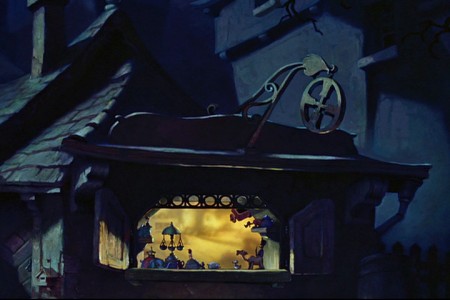
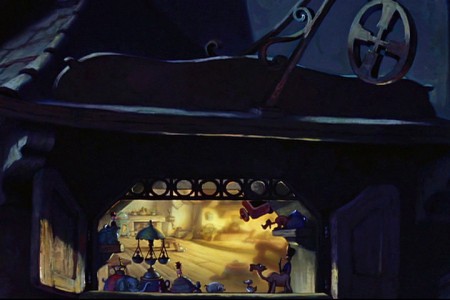
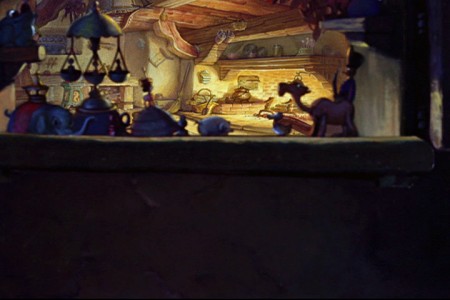
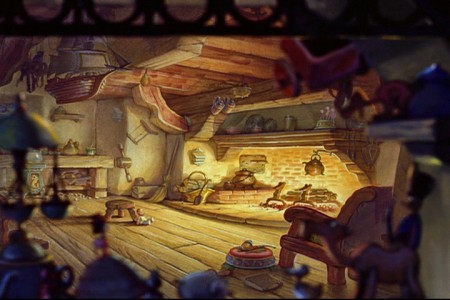
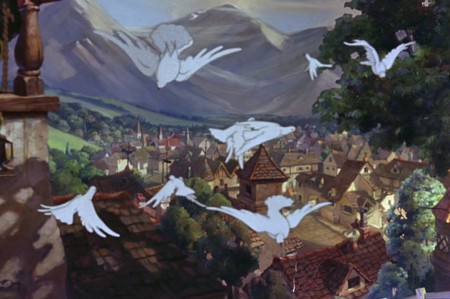
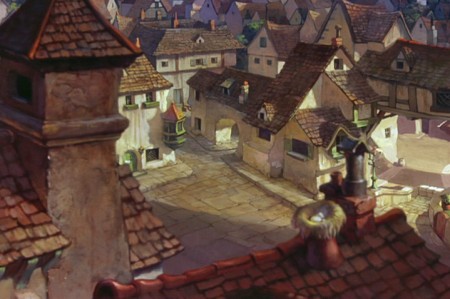
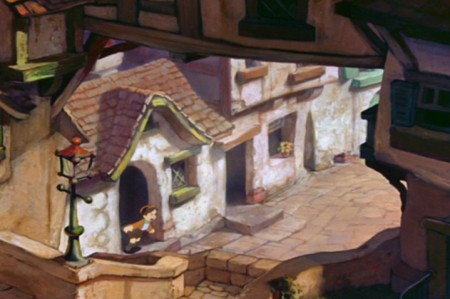
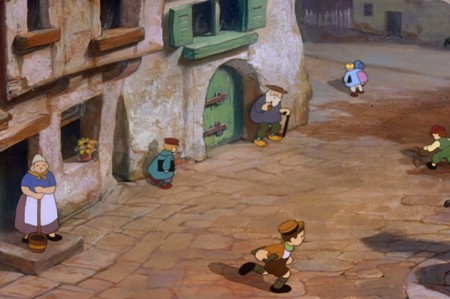
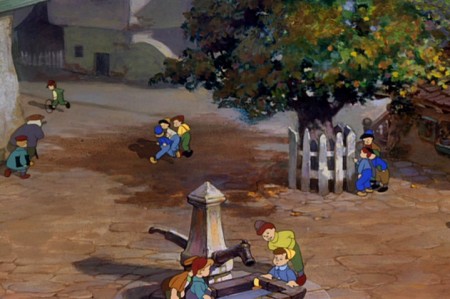
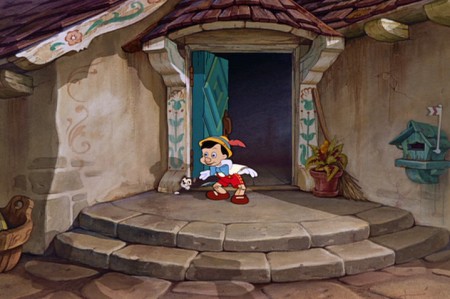
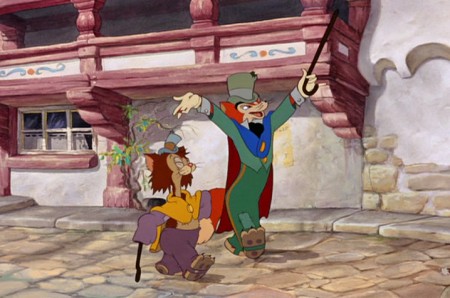
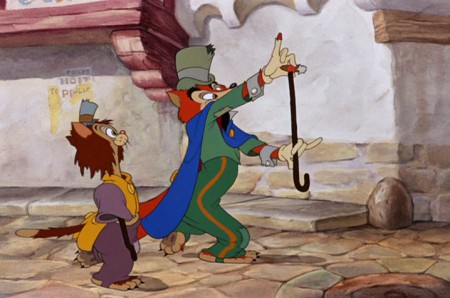
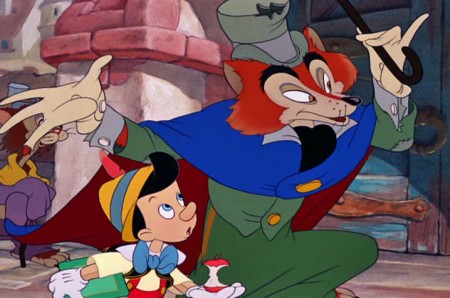
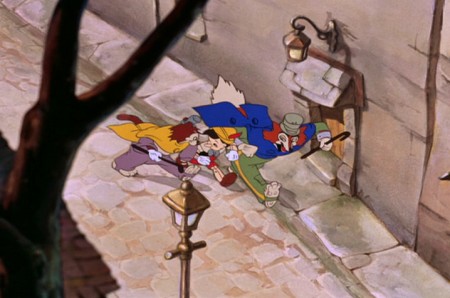
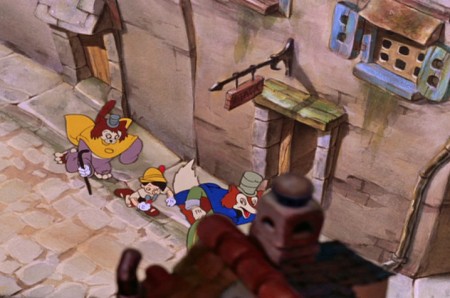
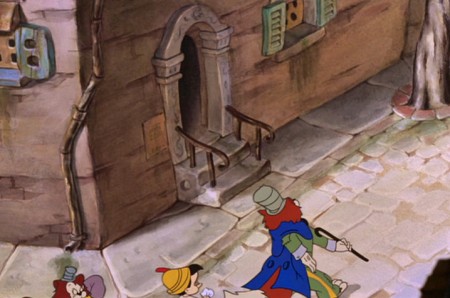
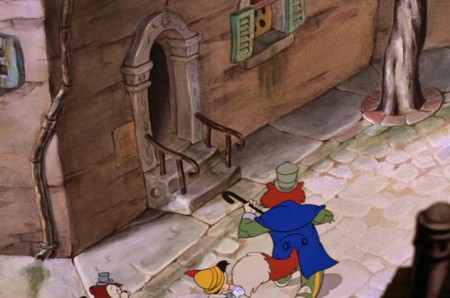
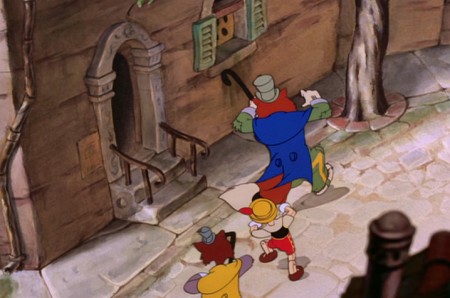
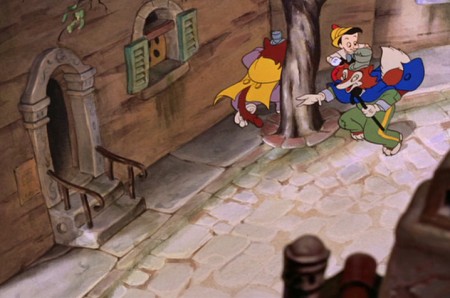
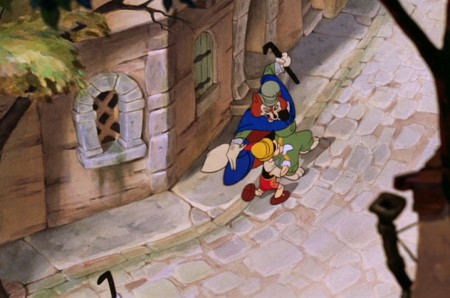
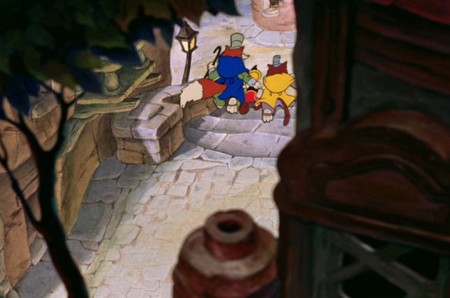
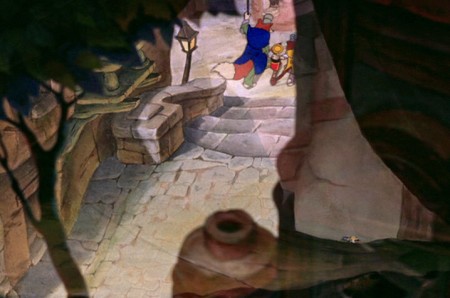
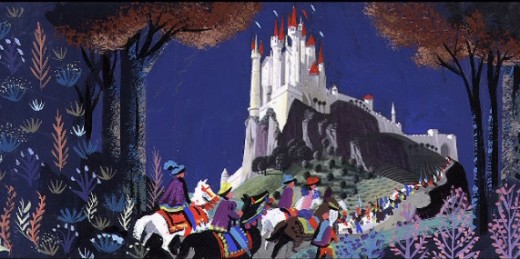
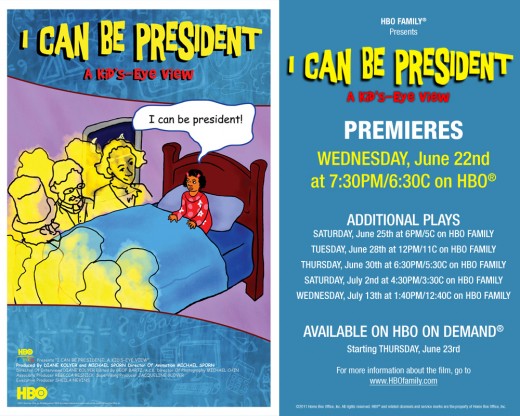
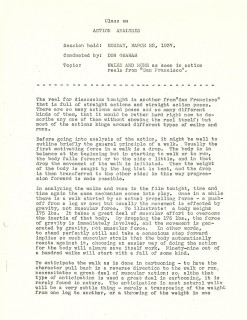
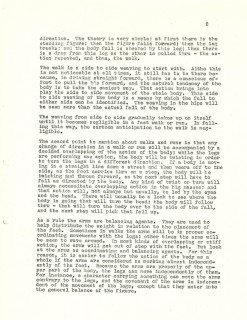
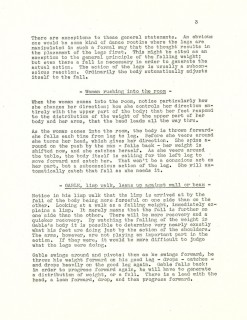
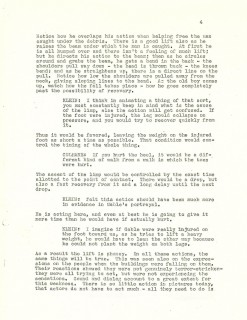
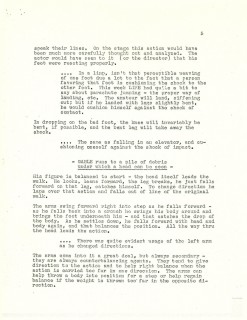
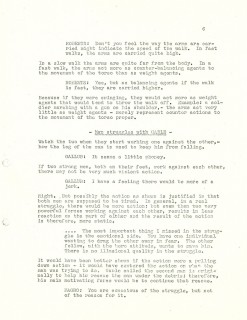
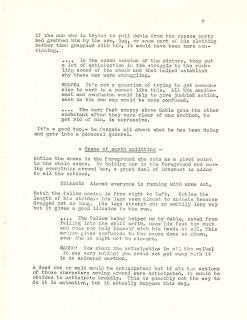
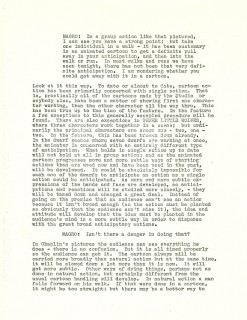
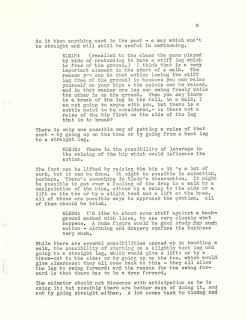
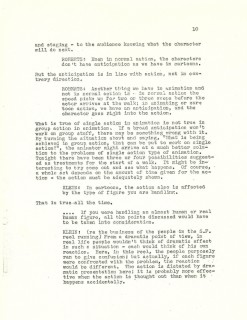
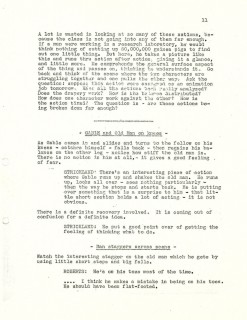
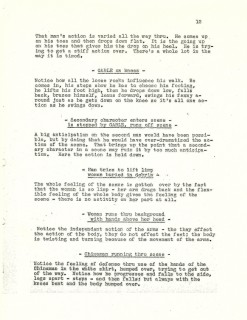
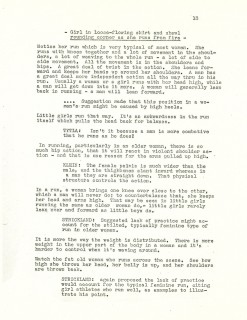
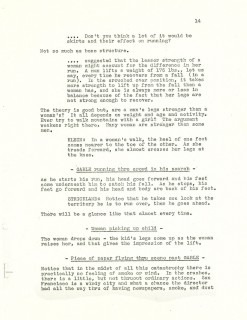
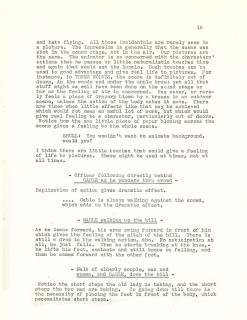 15
15